Every year like clockwork, summer swiftly swings by and we’re left wondering how it’s already more than half-way through the year. If you’re curious about the types of clothing that will keep you cool, more specifically the best types of fabrics to know about for hot summer months, this article is for you.
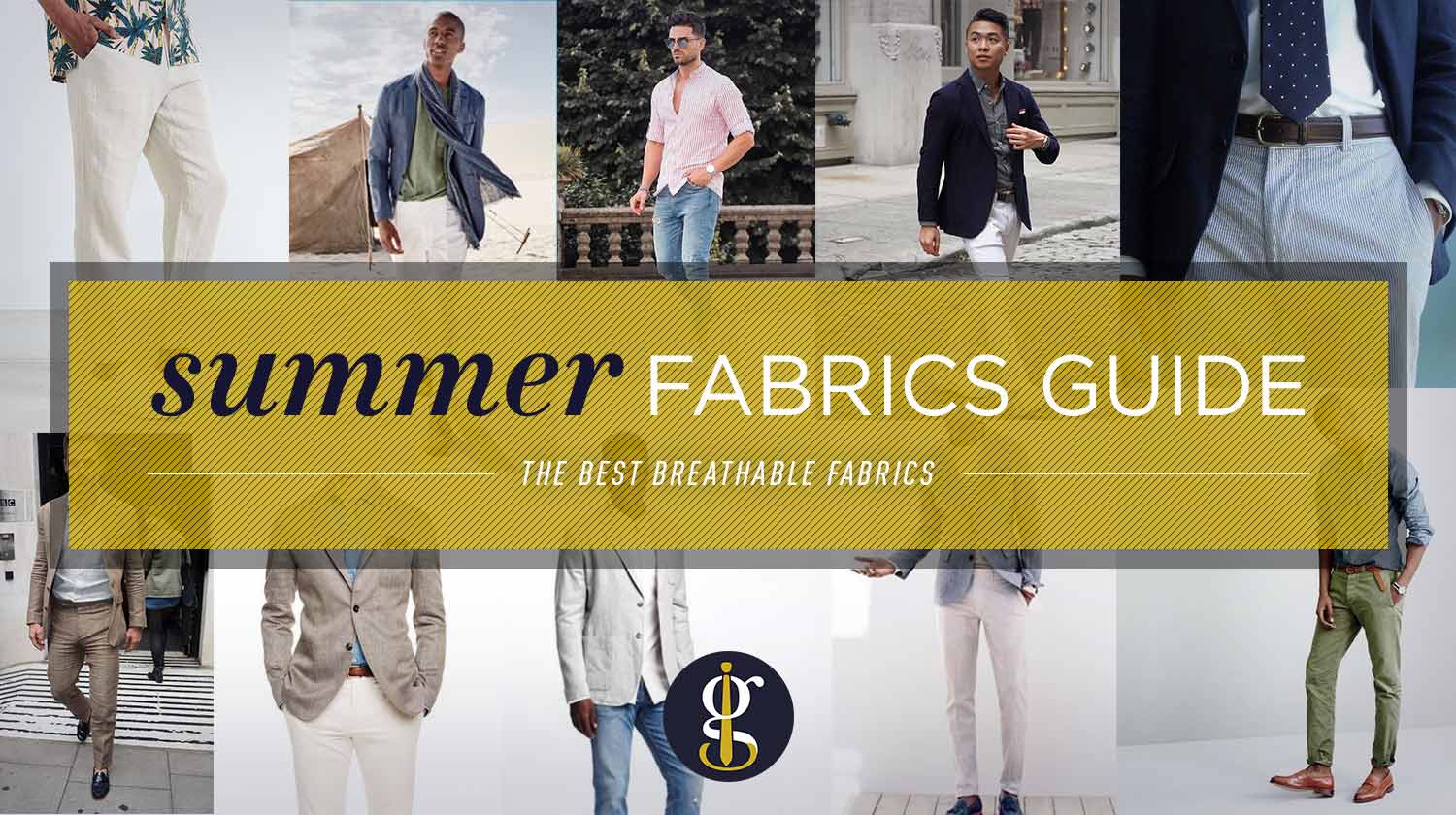
Whether you’ll be manning the grill at your next backyard BBQ or beach bound to surf, these are the fabric types that you’ll want to wear. This list of summer fabrics are lightweight, breathable and body cooling so that you’ll be comfortable and cool all summer long.
Furthermore, this comprehensive guide will explain why you’ll want to wear these specific fabric types, the downsides of wearing them and how you can wear them as mother nature turns up the heat.
» Related Video:
Subscribe to the GW YouTube channel.
WHAT FABRICS ARE BEST FOR HOT WEATHER?
Let’s get started, first with the staple of all staples; cotton fabric.
1. COTTON
Cotton is by far the most used fabric for clothing. It’s the quintessential four season fabric and what you’ll primarily see on most garments that you own, from basic t-shirts and button ups to shorts and jeans. Its comfort, durability and versatility make it an excellent choice for bedding, textiles and clothing.
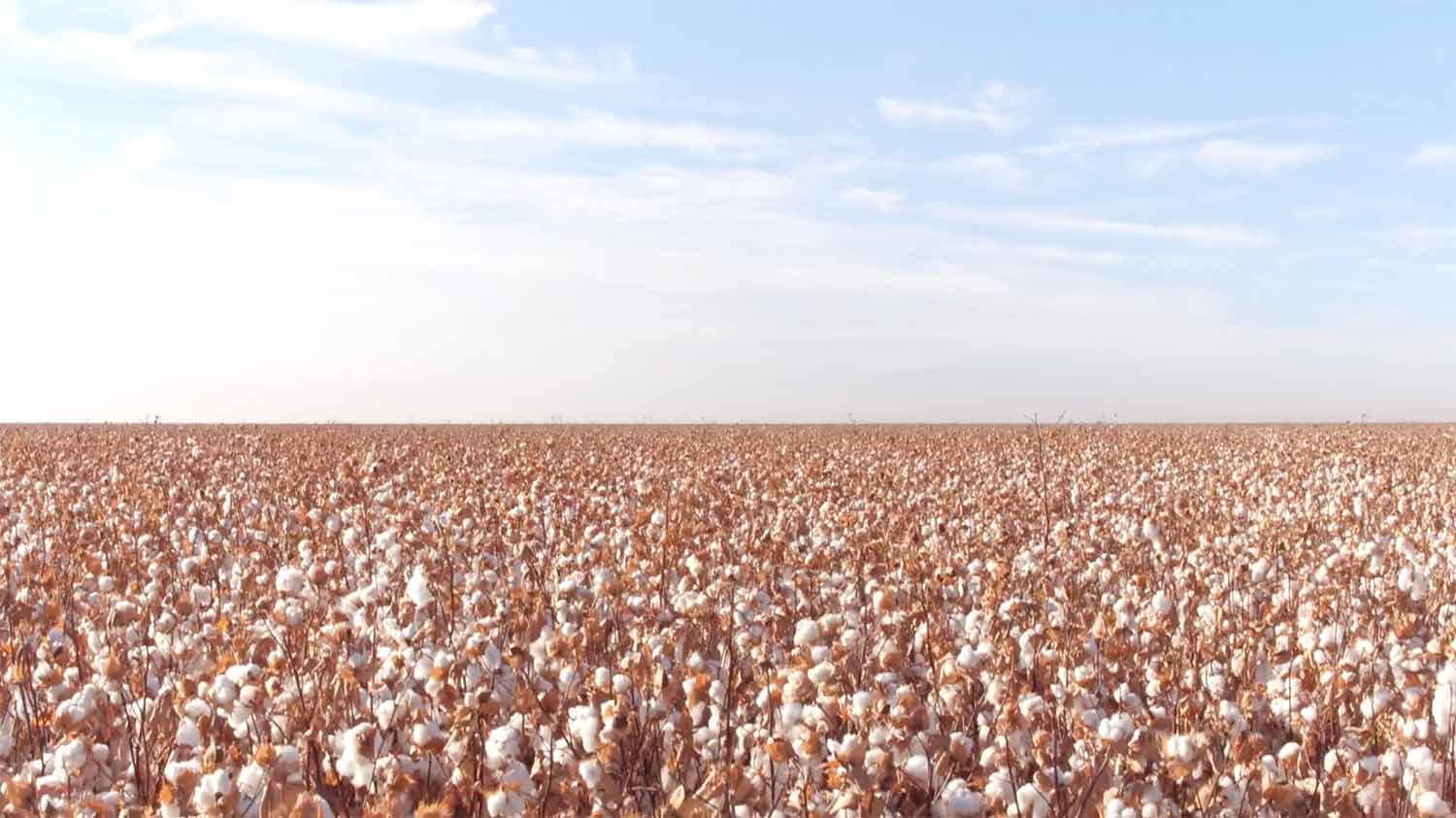
What is Cotton Fabric?
Cotton is a highly breathable fiber that absorbs a decent amount of moisture and has a fairly open weave which allows air to circulate through the fabric. It’s safe to say that cotton is the world’s favorite natural fiber.
Why Wear Cotton?
Cotton is almost always a smart choice when it comes to warm weather fabrics. Here’s why you’ll want to wear cotton for the hotter summer weather.
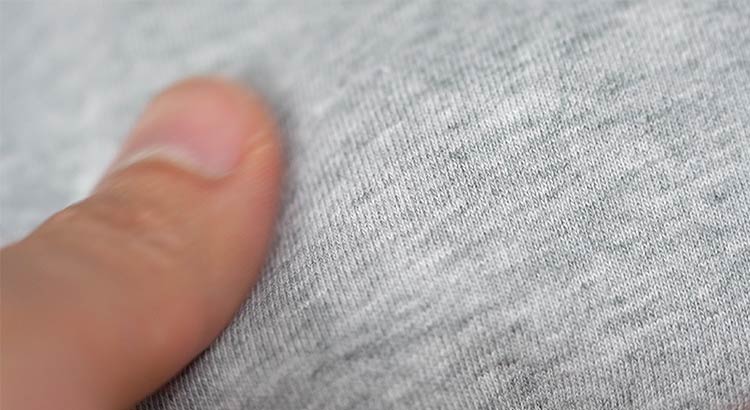
1. Cotton is Comfortable
A key trait of cotton is its softness. It’s certainly not itchy, stuff or clingy like many artificial fibers. There’s a reason why most basic tees are made with either 100% or a primary blend of cotton, that’s because of its comfortability.
2. Cotton is Hypoallergenic
Cotton is a natural fiber and so it’s highly unlikely to cause any type of allergic reaction.
3. Cotton is Versatile
Cotton as a fiber is quite versatile, it can be knitted or woven into many different fabrics like chambray, corduroy or lace. Cotton can also be found in not just athletic wear or formal wear, but also many different types of textiles from bedding to home and kitchen linens.
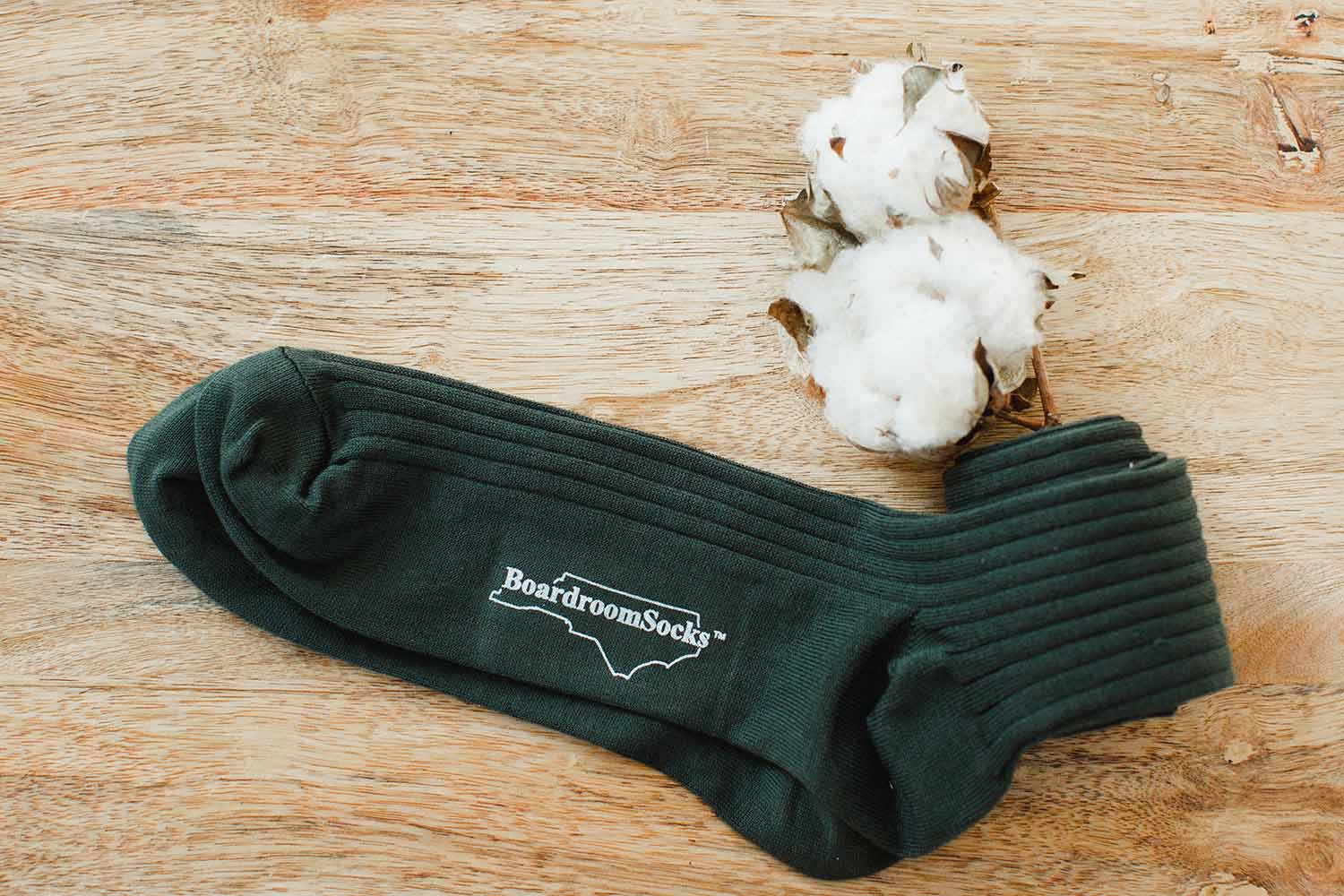
4. Cotton is Naturally Sustainable
Cotton is a durable fabric and will typically remain clean after a single wear and so you can usually wear it over and over again before it starts showing signs of wear or odor before washing it.
Furthermore, cotton, being one of the world’s oldest fibers has been around for thousands of years. It’s a renewable, biodegradable fiber that’s regulated by the USDA.
5. Cotton is Breathable
Cotton is known to be more breathable than synthetic fibers like polyester and so it’ll likely keep you cooler in the warmer weather. You can also get moisture-wicking cotton that is specifically designed to keep you cooler and drier while working out.
6. Cotton is Easy to Care For
Cotton is one of the easier fabrics to care for, you can easily hand wash it and let it line dry or lay flat or you can simply thrown your cotton garments into the washer to save on dry cleaning.
» Related: You might like this review of the Uniqlo Supima Cotton T-Shirt.
Downsides of Wearing Cotton
While pure cotton fabric is a popular choice for those looking for natural and comfortable clothing, there are some downsides of cotton too.
1. Cotton Wrinkles Easily
If you’ve worn a 100% cotton t-shirt or button up (which I’m certain you have), then you know how badly those shirts can wrinkle while stuffed in your closet or luggage.
It’s unfortunate that cotton wrinkles quite easily and so you’ll often find yourself ironing out those wrinkles, particularly with your professional clothing like dress shirts, trousers, etc.
2. Cotton Often Shrinks
Everyone has experienced having their clothing shrink after a wash and dry cycle. Oftentimes it’s your garments made with 100% cotton. Some manufacturers may pre-shrink their cotton products, but more often than not you can expect your cotton clothing to shrink.
What causes it is that the fibers become shortened when exposed to water, then when you place the garment into the dryer on high heat, it sets in the shrunken size. This is why you’ll often see care labels with instructions for “tumble dry low,” drying on low heat may prevent mass shrinking, but as soon as you wash your cotton garments, it will likely shrink a bit.
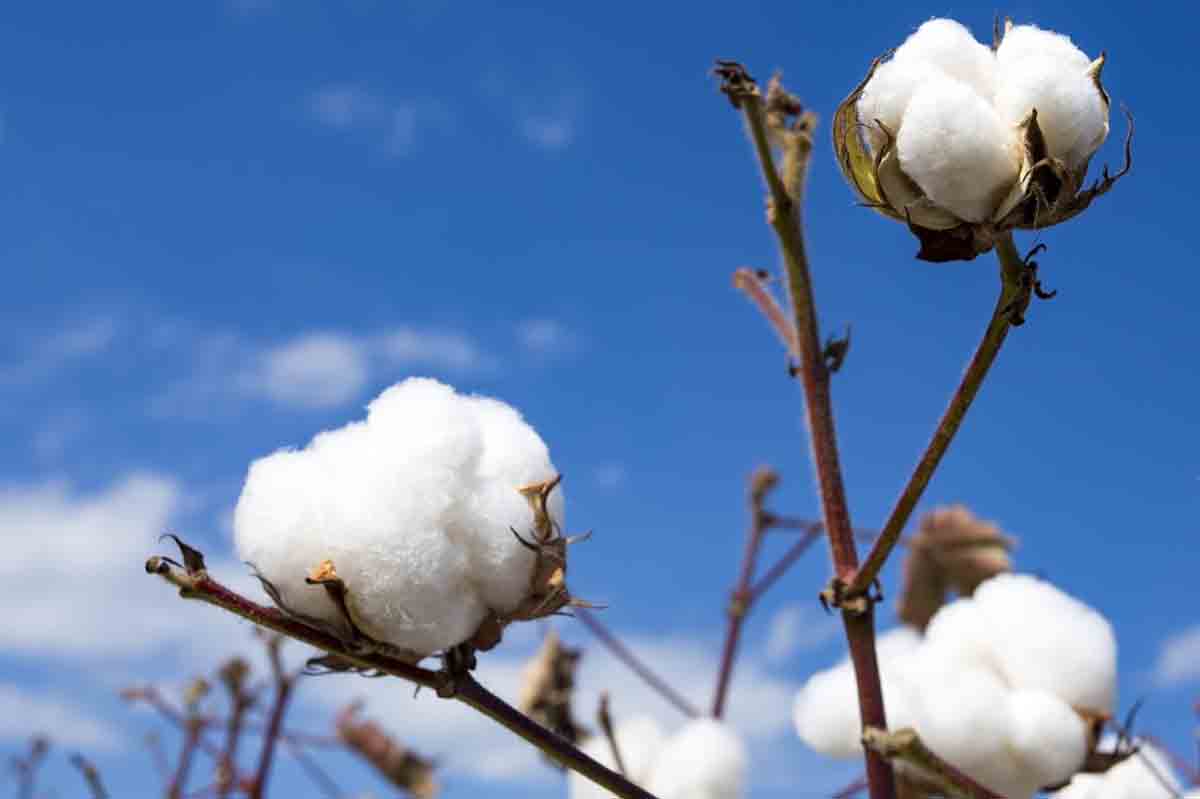
3. Cotton Retains Water
A trait of cotton fabric is that it absorbs and retains large amounts of water. And so, when you’re sweating, cotton will often hold the wetness which can lead to discomfort and odor after prolonged periods of wear. This is why it’s beneficial to exercise in clothing that are made with blends of cotton and other materials.
» Readers’ Favorite: You might like this hands-on review of the Best T-Shirt Brands for Men.
2. LINEN
Linen fabric is lightweight, yet strong and breathable in nature, while providing a stylish texture. Oftentimes you will find linen and cotton blends, combining the benefits of both of these popular fabrics.
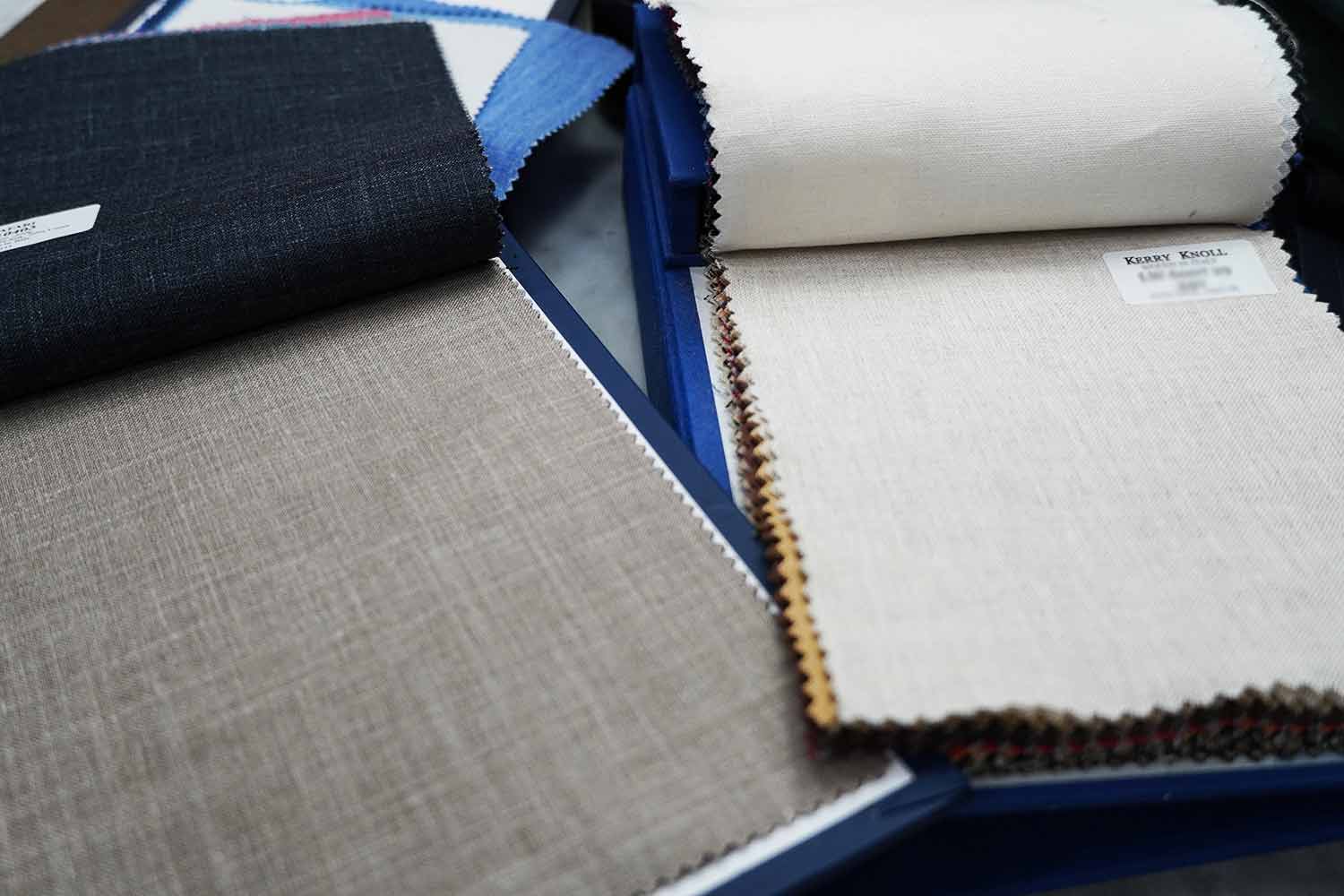
What is Linen Fabric?
Linen is made from fibers of the flax plant, linen is perhaps the quintessential summer fabric. It’s widely known to be a lightweight, breathable textile ideal for purposes like home furnishing to clothing. A myriad of products from towels to table cloths and bed sheets to button up shirts are often made with linen material.
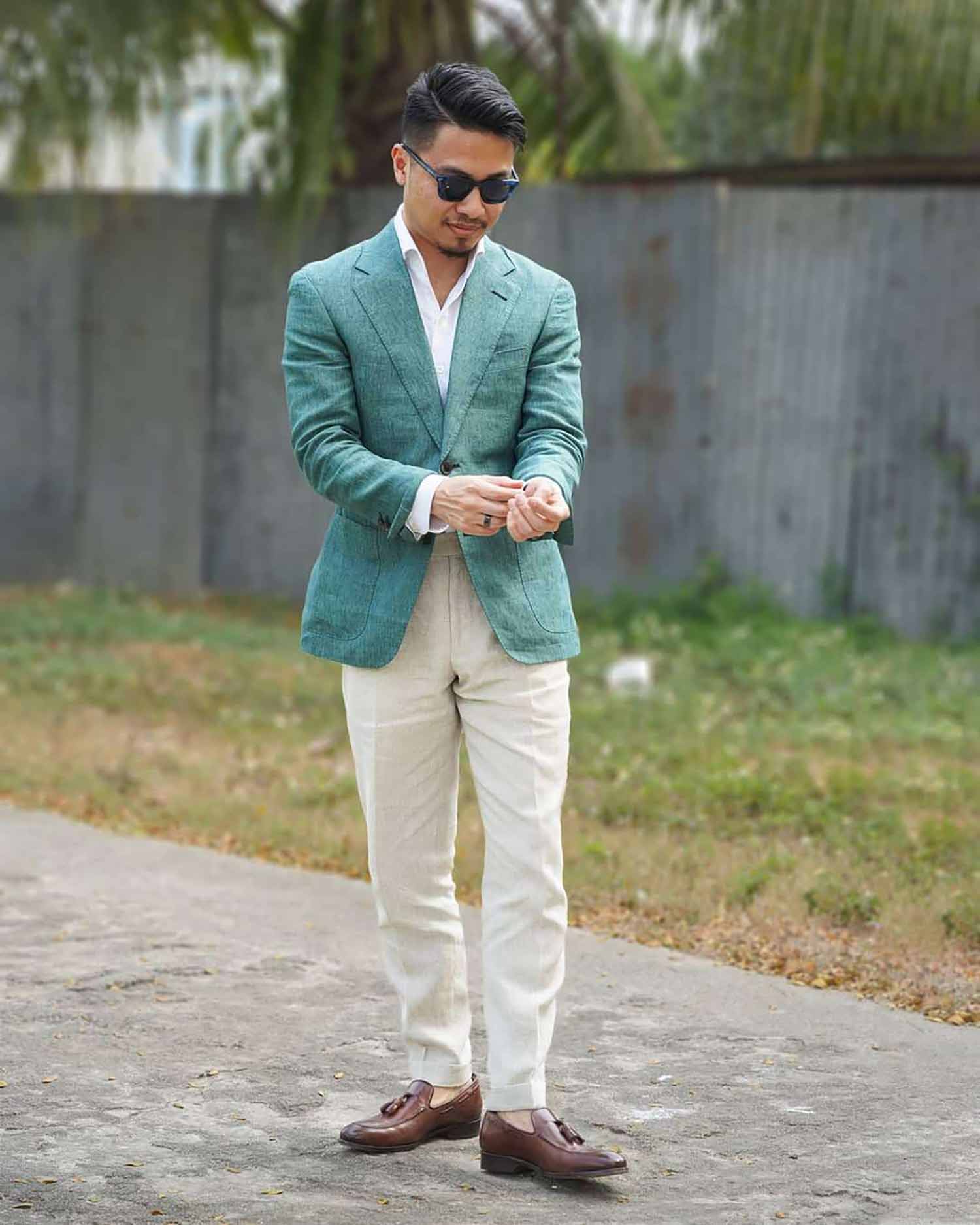
Why Wear Linen?
When it comes to clothing fabrics to wear in the summertime, there are a myriad of reasons linen is perhaps the most popular.
» Related: You might like this comprehensive review of my Alan David Custom Linen Suit.
1. Durability
For one, it’s a remarkably durable fabric. In fact linen is known to be the strongest natural fiber in the world. This makes linen fabric able to withstand regular wear and tear without ripping or losing its shape after washing.
In fact, linen is such a durable fabric that the ancient Egyptians used to wrap mummies with layers of linen during the mummification process. Talk about longevity.
And since linen fibers are thicker and stronger than cotton, they’re often used in blends to help strengthen cotton garments. It’s natural durability is not just evident in clothing, but US dollar bills consist of 25% linen.
2. Breathability
When it’s hot and humid out, wearing breathable fabrics can be a lifesaver. Thankfully linen is highly breathable and allows for more airflow since the fabric does not stick to your skin. This provides a cooling effect, especially when air blows through the light fabric allowing for better breathability.
Additionally linen is a highly absorbent which helps to remove perspiration from the skin and keeping your garments and body cool. In fact, due to its molecular structure, linen fabric can absorb up to 1/5 of its weight before feeling damp or wet. The positive being that it takes long for linen cloth to feel wet, and it quickly evaporates and dries, much faster than cotton.
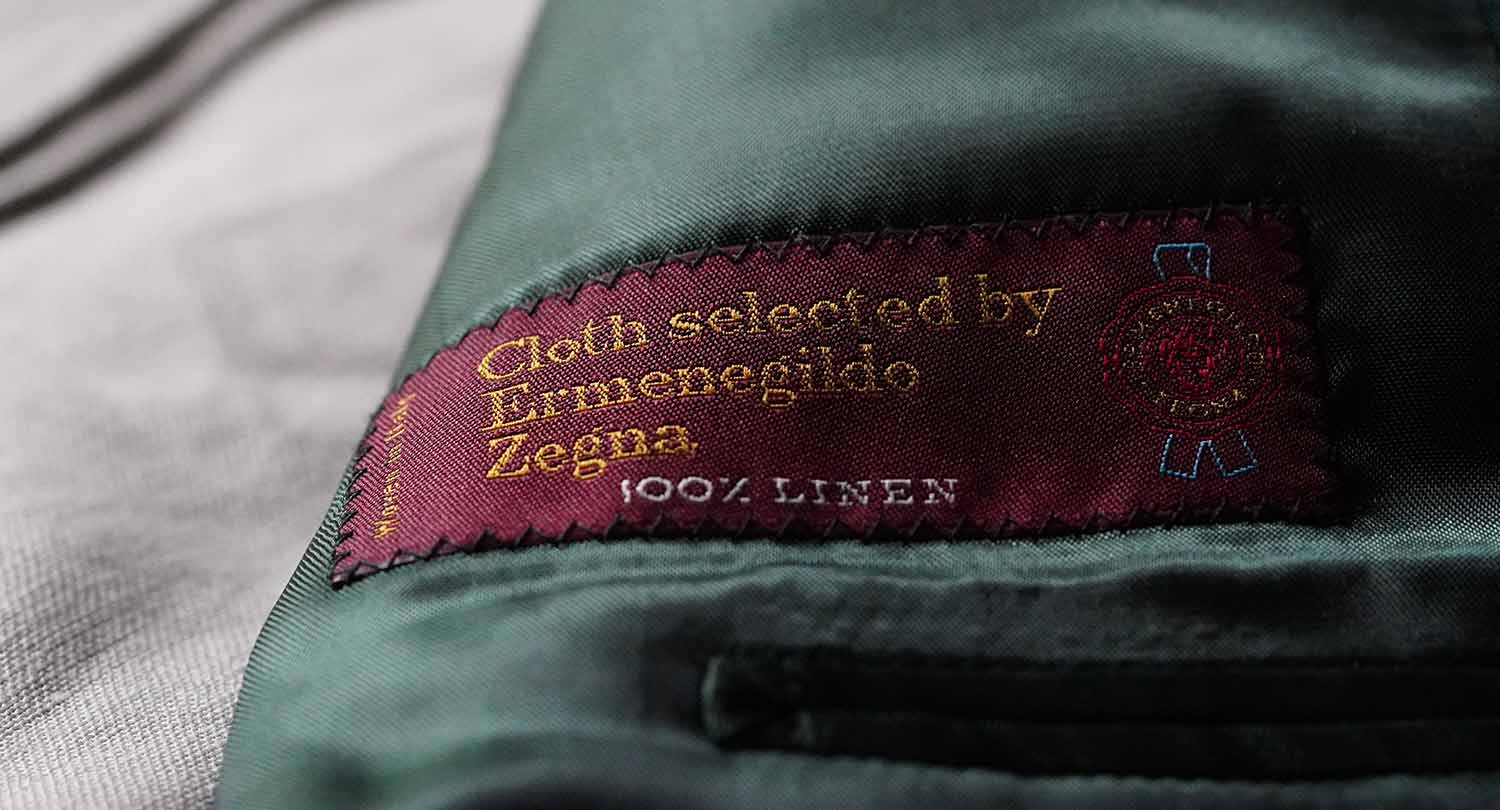
3. Comfort Year Round
Most people (myself included) only think of linen as a summertime fabric, and while it definitely is, it can also help to keep you comfortable in cooler weather. Since linen’s weave allows for more airflow and has moisture wicking properties, it surely makes for a cooler sleep.
And so, using linen bed sheets underneath a thick and warm comforter could be an ideal solution if you tend to run hot and overheat under your heavy winter covers.
Applying this to your clothing, you could thus wear linen as a base layer to help to keep you cool and comfortable not only in the heat, but also when the weather drops.
4. Sustainability
A forth favorable property of linen fabric is that it’s one of the more eco-friendly fibers. Made from the flax plant, linen can grow in lower quality soil, requiring less water than with cotton production.
When untreated (non-dyed) Linen is 100% biodegradable and so you can feel good knowing that when your linen garments are ultimately trashed that they will not be adding to the waste.
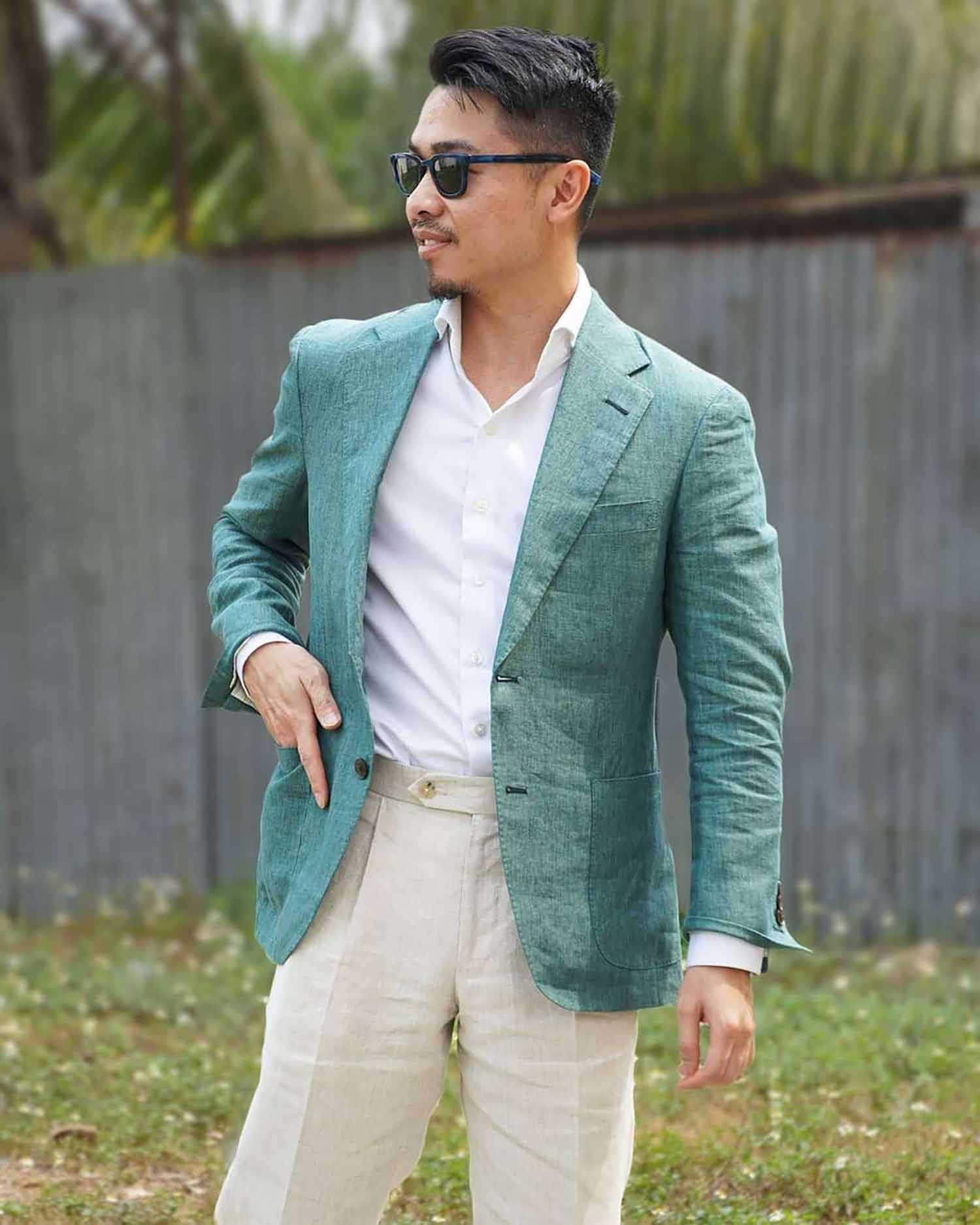
5. Antibacterial Properties
Linen is a flax fabric which distinguishes it from other natural fibers. Silica, which is found in flax material prevents bacteria growth which acts as a natural anti-virus, antimicrobial and antifungal agent.
Plus, linen is a moisture wicking machine and will dry out much faster than cotton, thus leaving less room for sweating and stinkiness.
6. Cool Style
Finally, linen fabric has a distinguished look to it that’s more visually appealing than plain cotton. Personally, I prefer the coarse texture and thick weave of a linen suit.
I have a pair of linen shorts that are my favorite pair to wear in the summertime because it not only keeps me cool, but looks stylish. There’s just something charming about a well worn linen garment.
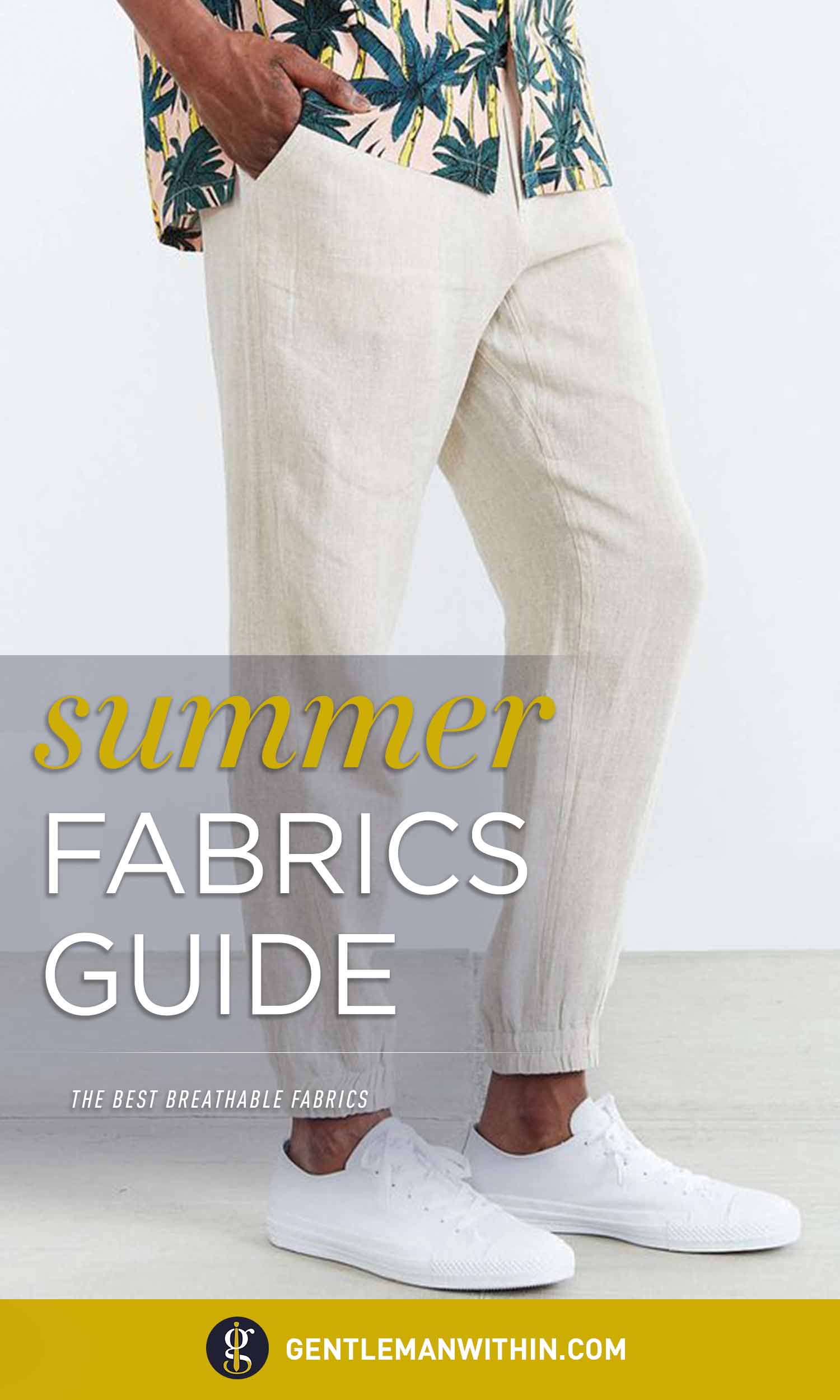
Downsides of Wearing Linen
While there are many advantages of wearing linen, of course there are a few downsides to wearing this popular warm weather fabric.
1. Linen Wrinkles
The first flaw of linen is that it wrinkles, a lot, especially 100% linen. This could make for an unkempt appearance. Be aware that when you wear an all linen suit or button up shirt that it will wrinkle in the back and where the arms bend. It’s an inevitable trait of linen that I feel can also be its charm.
2. It’s Cold Inside
Secondly, though linen textiles are ideal for keeping cool in warm weather, it is not an insulating fabric and so linen will not retain heat at all which could be a downside if you were to enter a building with tundra blasting AC. Having a lightweight jacket on hand would be an ideal solution.
3. Not Dryer Friendly
Finally, linen is a highly textured fabric and can lose its charm by washing it with certain chemicals and detergents, and so you’ll want to be aware of that. And you’ll definitely want to avoid a hot dry cycle. It’s a good idea to allow for linen clothing to air dry or tumble dry low at least.
» Readers’ Favorite: You might like this complete guide on Men’s Summer Essentials.
How to Wear Linen Clothing
Here’s some style inspiration on how you can wear linen clothing come summertime.
3. CHAMBRAY
Chambray is an All-American staple that belongs in every man’s summer wardrobe. It not only gets the style points, but can also help to keep you cool from springtime throughout the dog days of summer.
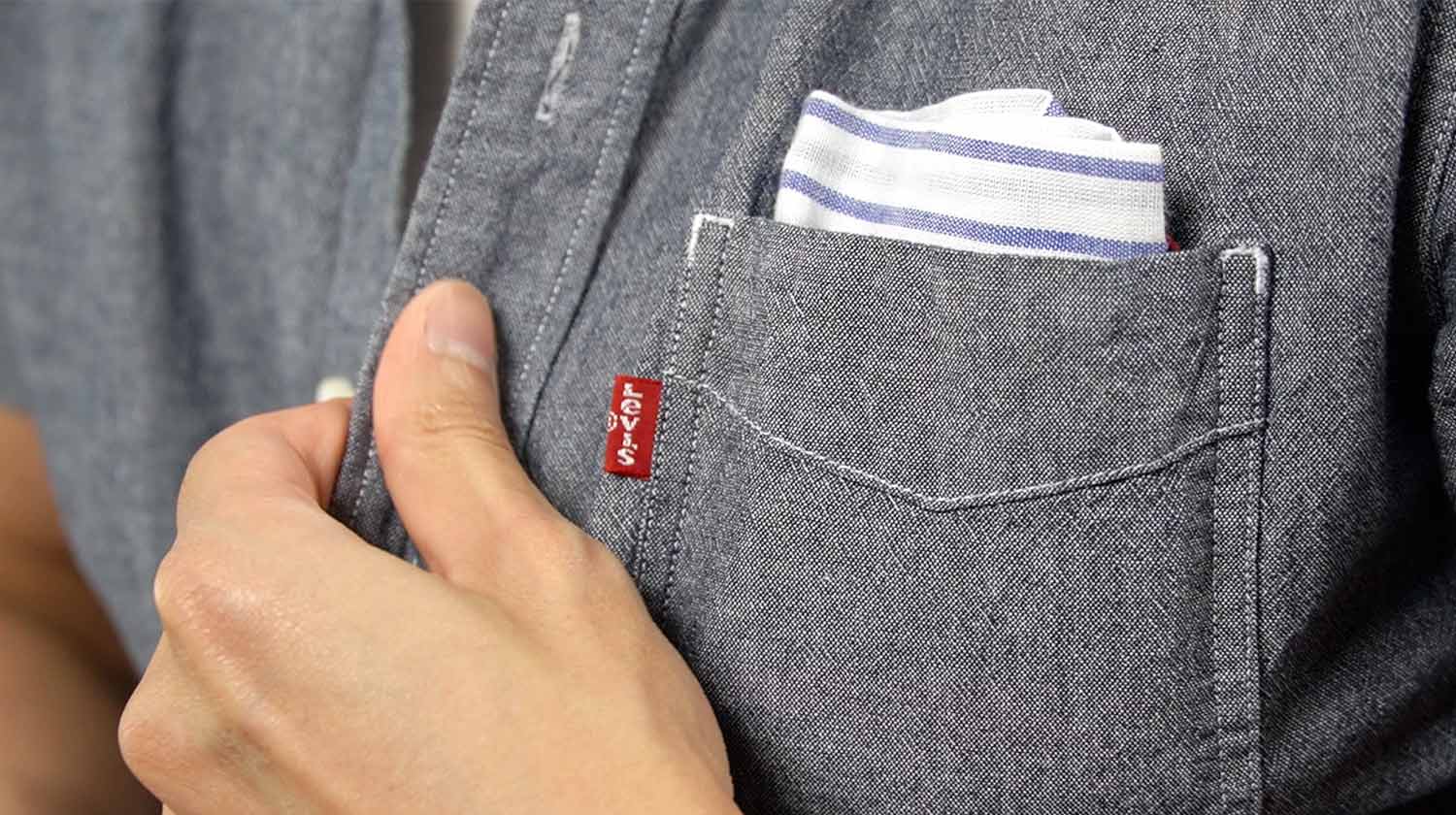
What is Chambray Fabric?
Chambray is a cotton plain-weave fabric made with a dyed warp yarn and white filling yarn. It’s most distinguishable when the weave is looser which makes for a great casual shirt. And the tighter the weave, the more refined the chambray shirt will appear.
As mentioned above, chambray is a plain weave fabric that’s woven with both colored yarn (in the warp) and white yarn (in the weft) that creates its unique look. It is a traditionally light blue color, but can be found in an array of fashionable colors.
Chambray vs Denim
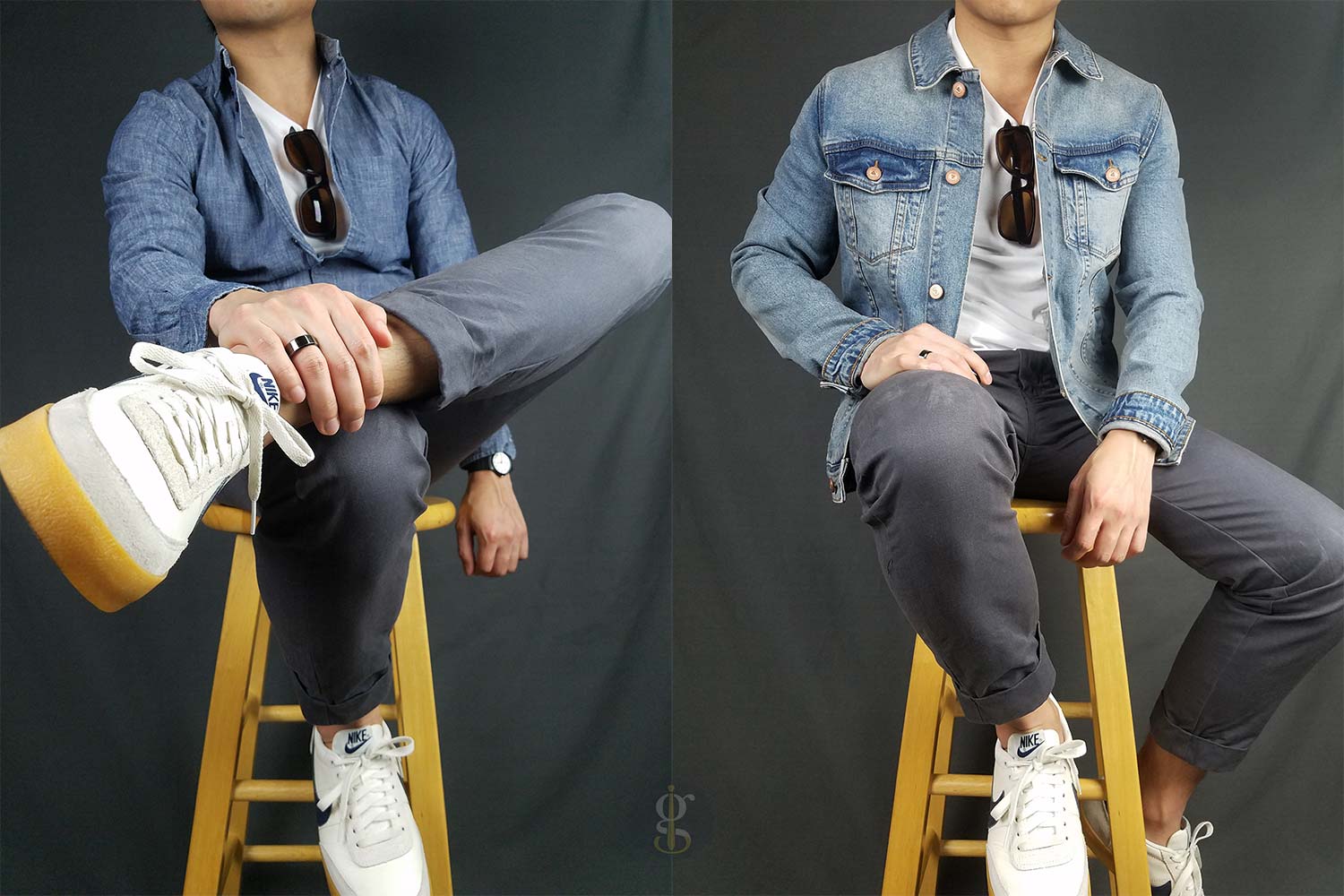
Chambray is a similar fabric to denim, but not nearly as well known. It has a similar aesthetic to denim too, but is often more lightweight, thus making it an ideal summer fabric.
Also similar to denim, you can find chambray in both lightweight and heavier weights. It’s often mistaken for denim because of the similar weave (blue warp and white weft woven together), but chambray is lightweight and airy as opposed to denim’s stiff and sturdy nature.
Why Wear Chambray?
Here are a handful of reasons why chambray clothing makes for an excellent choice.
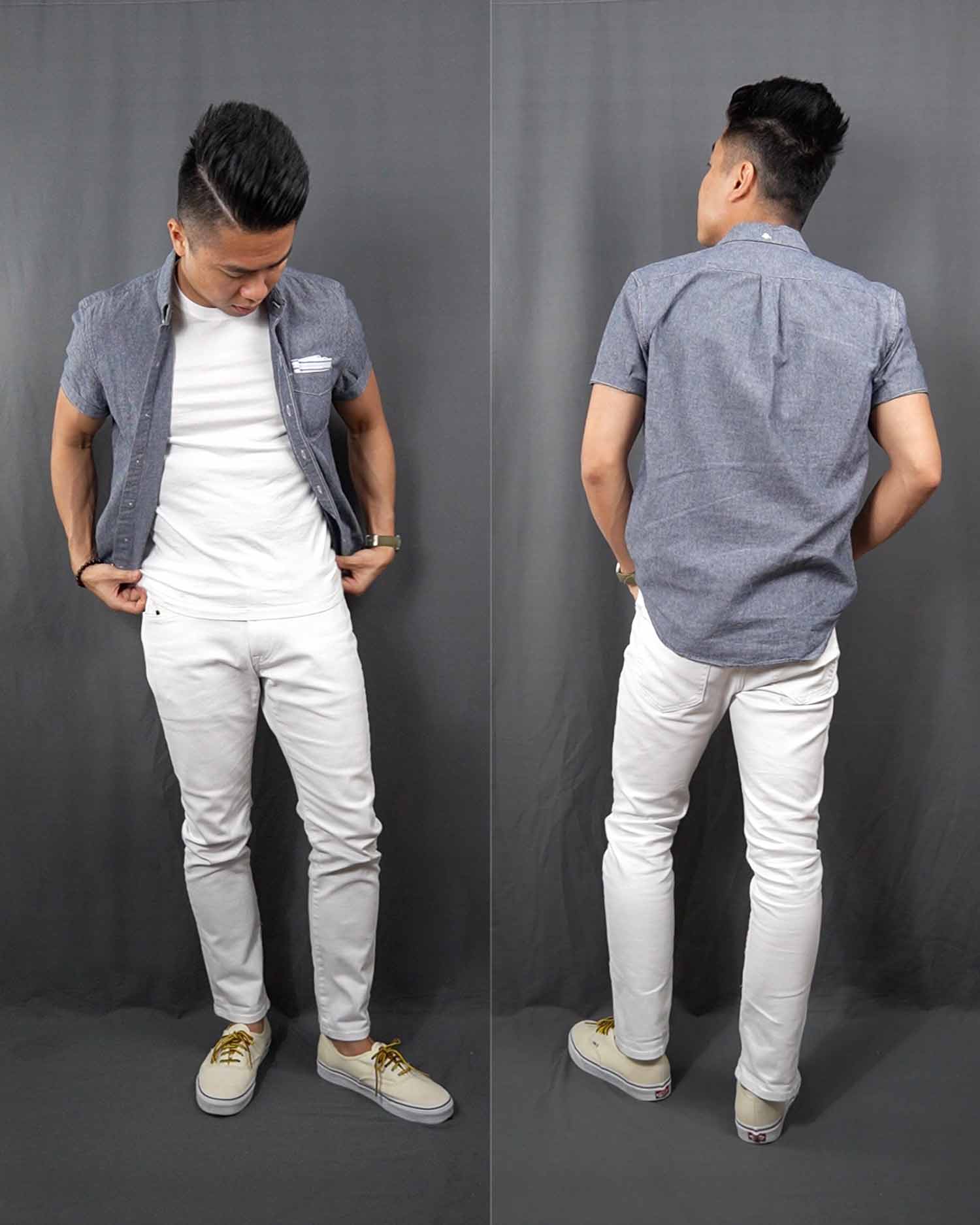
1. Chambray is Soft
While your garment may be a bit rough to start, chambray is inherently a soft and breathable fabric because it’s mostly made with short-staple cotton, though you’ll find it made with long-staple cotton too. Long fibers give fabrics a softer and stronger nature.
2. Chambray is a Summer Fabric
Chambray is certainly summer friendly. The cotton in chambray fabric will help to keep you cool in heat and humidity. With a finer weave due to a higher thread count, chambray is a breathable fabric that’s comfortable on those hotter days.
3. Chambray Has Moisture-Wicking Capability
If you’re someone who’s prone to perspiration, then chambray is a fabric you can wear without worry in the hot summer months. Of course it’s always a good idea to wear a lightweight undershirt for additional sweat protection.
5. Chambray is Versatile
And of course like denim, chambray is versatile, lending itself to being dressed up or down. You can easily wear chambray button up shirts tucked in for a dressier look or untucked for a more casual cool vibe.
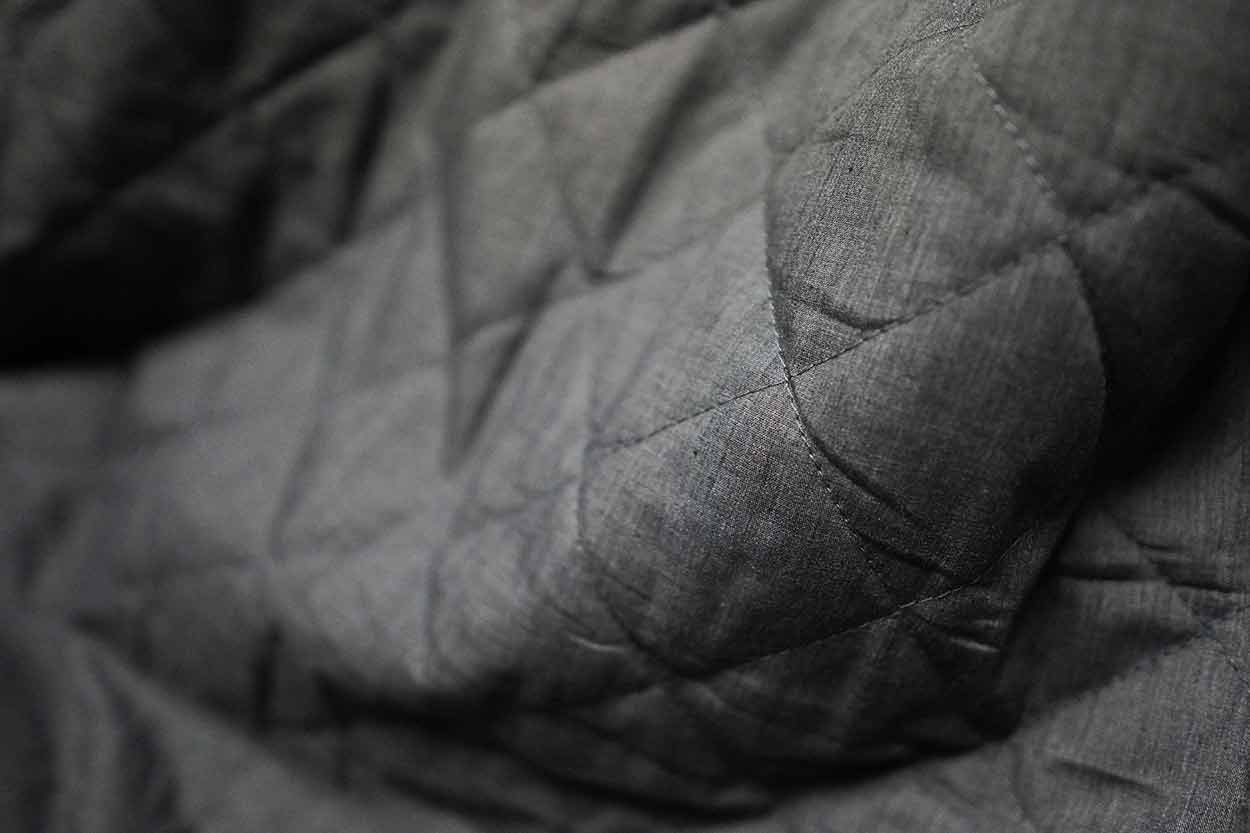
Downsides of Wearing Chambray
Chambray isn’t always the most comfortable fabric, especially when you are still breaking it in. It’s a rougher texture similar to linen, but will soften with time.
1. Not the Most Durable
While generally chambray is a pretty durable fabric, it’s more prone to wear and tear than cotton or its denim counterpart. It’s not surprising that rips can occur through regular wear over time and many wash cycles.
We wouldn’t recommend to dry chambray on high heat as this could cause harm and shorten the life of your garment.
2. Chambray Wrinkles Easily
Like linen fabric, chambray does wrinkle easily, which is a part of its charm and could be a positive if that’s the style and look you’re going for with your casual clothing. You can easily release the wrinkles by pressing your chambray garments with a hot iron on the cotton setting with steam.
» Related: You might like this Definitive Guide on 8 Types of T-Shirts.
How to Wear Chambray Clothing
Here’s some styling inspiration on how you can wear chambray clothing this summer.
4. TENCEL
If you’re looking for clothes that keep you cool, look for tencel on the label.
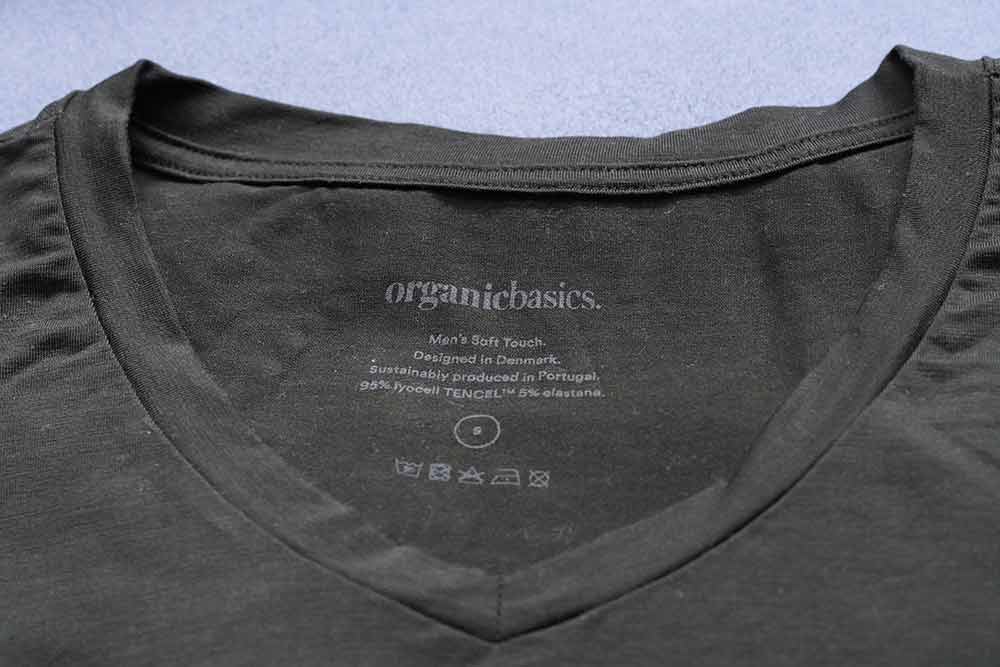
What is Tencel?
Tencel isn’t actually a fiber, instead it’s a brand name for a set of fibers called modal and lyocell. These fibers are incredibly soft and is a favorite among sustainable fashion brands. More and more, tencel can be found in everyday clothing, bedding and more.
» Related: If you’re enjoying this Summer Fabrics Guide, then you’ll probably like this article on the Best Undershirts for Men too.
Why Wear Tencel?
Tencel is a super-soft fiber that’s a favorite among eco-friendly fashion brands. While it’s better for the environment that other similar fabrics, for example rayon, it’s not as sustainable as fabrics like recycled cotton or organic linen.
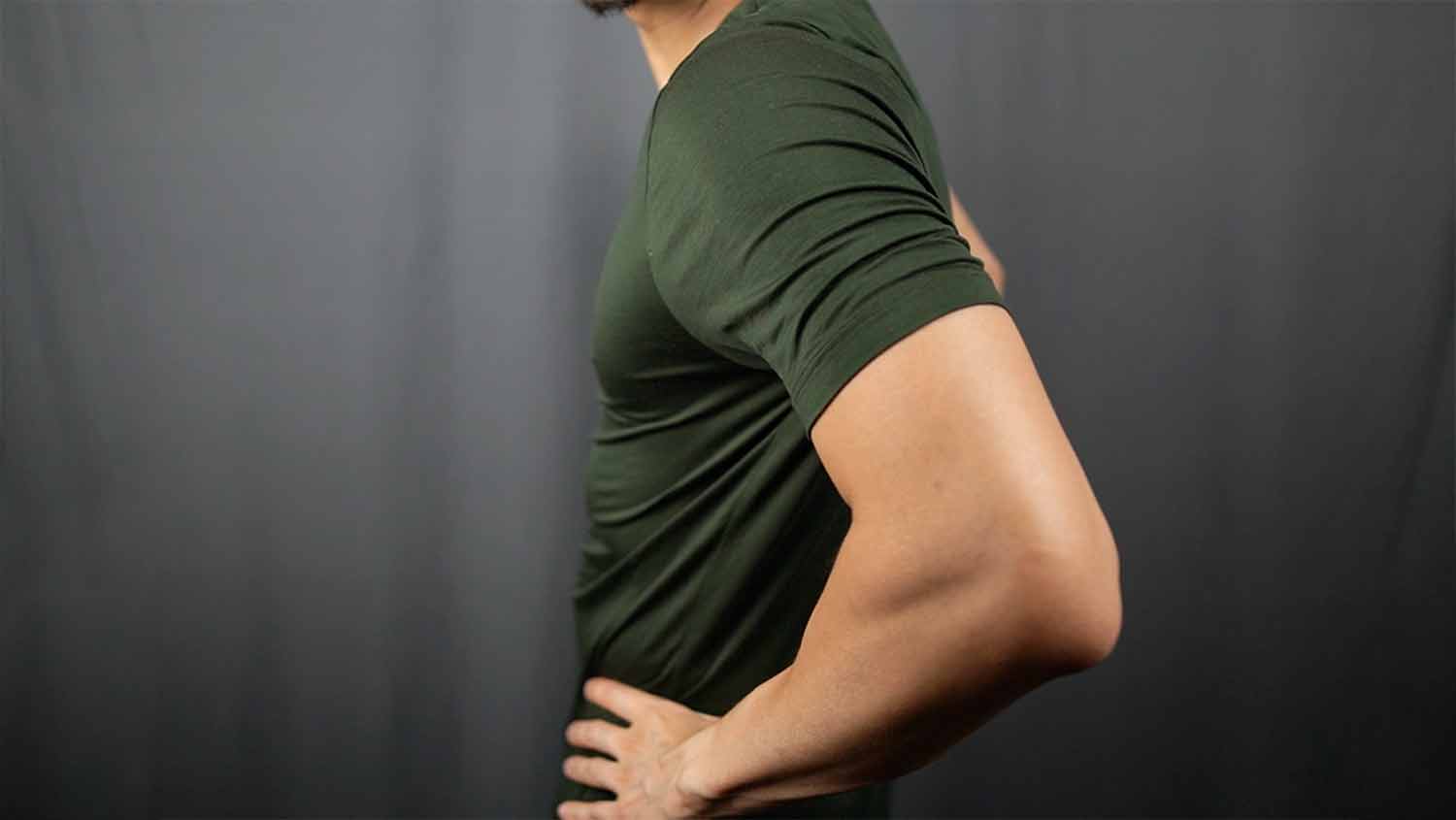
1. Its Versatility
Tencel is a mightily versatile fabric that can adapt to a wide range of clothing types from activewear to free flowing dresses.
2. It Absorbs Better than Cotton
Tencel has great absorption characteristics, in fact 50% more than cotton. This makes it more breathable and odor repellent than other synthetics, thus an ideal fabric for activewear.
3. Its Soft & Breathable
Tencel is a soft and breathable fabric that doesn’t trap as much heat and so it makes for great bedding material because it enables good airflow and feels cool to the touch.
Its soft and breathable nature also makes tencel a fantastic fabric to wear while you’re working out as it will help to keep you dry and cool.
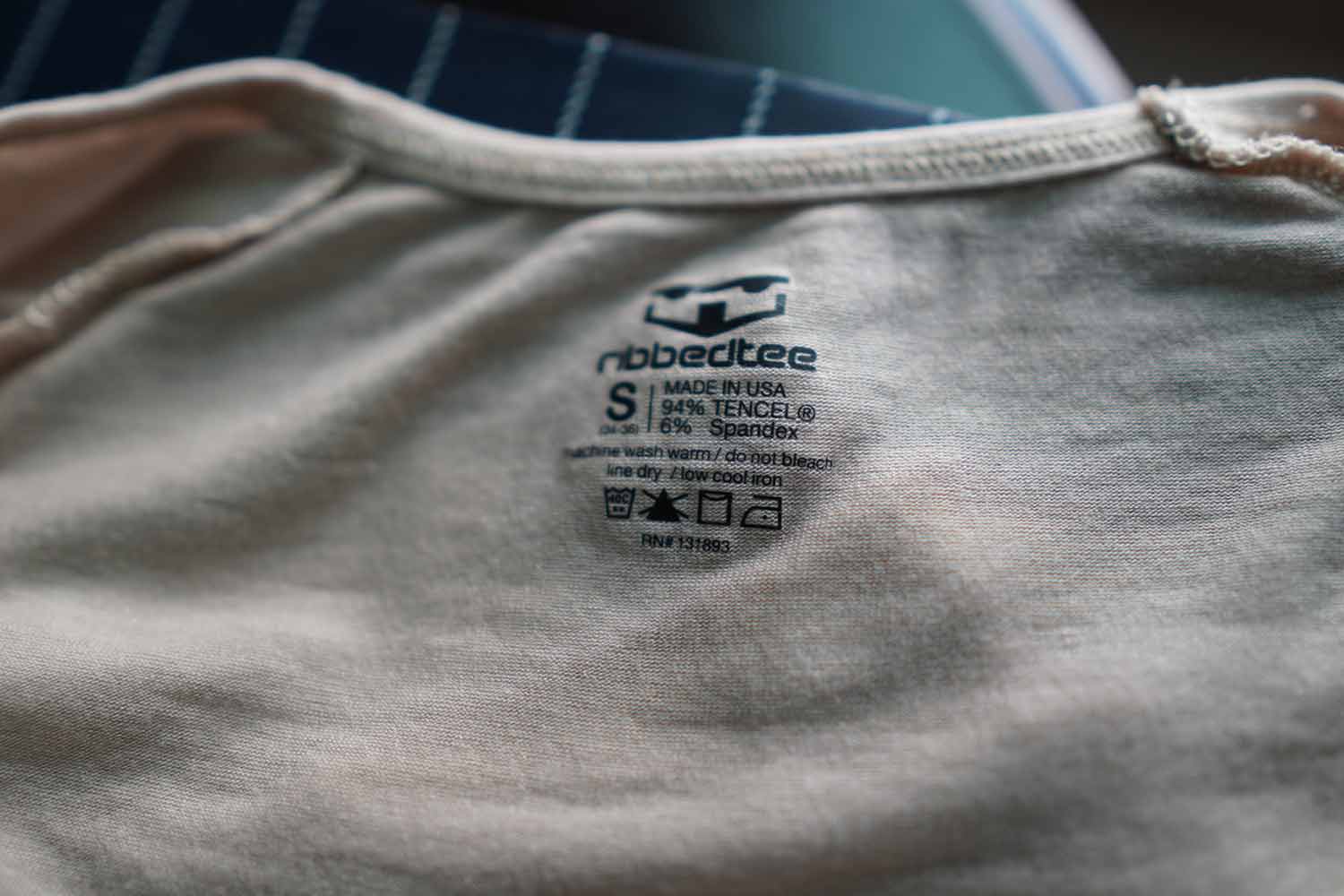
Downsides of Wearing Tencel
1. It’s Expensive
You’ll frequently find that tencel clothing is often pricier than standard cotton or polyester garments. But if you can afford a slightly more expensive
2. Not as Eco-Friendly as Natural Fibers
Organic cotton or linen is the more sustainable choice when it comes to fabrics, but tencel is still a good option when it comes synthetics.
5. POPLIN
Poplin has a distinctive ribbed texture and a tightly closed weave which gives it a unique kind of luster similar to silk. Today the term poplin refers to the weave of the fabric.
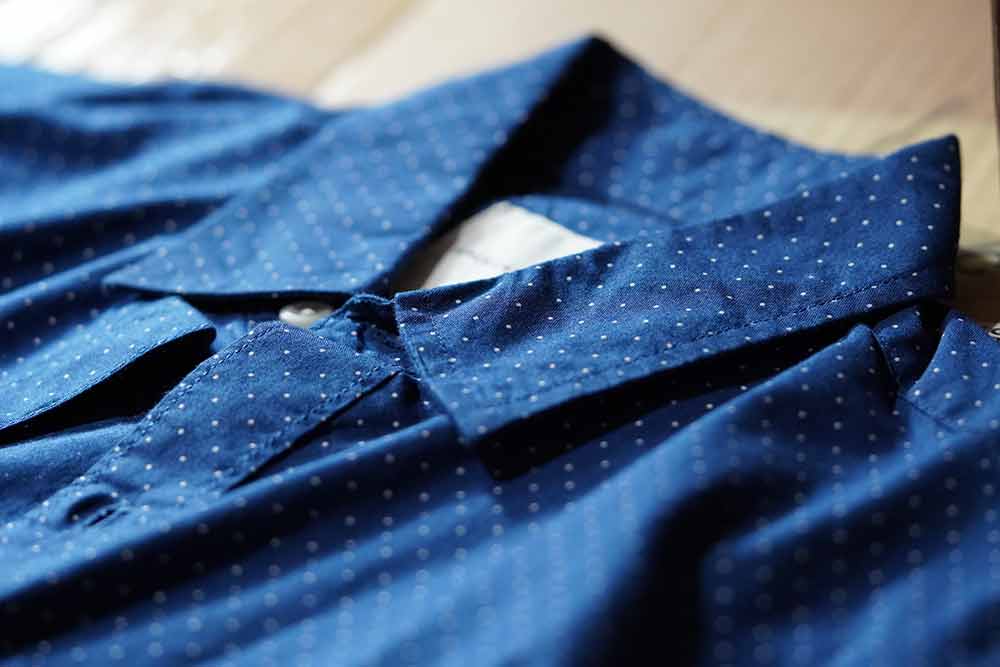
What is Poplin Fabric?
Poplin is a plain weave cotton fabric with very fine horizontal “ribs,” resulting in a crisp, strong fabric with a silky, lustrous surface. It was traditionally used for casual attire, but now has a place in your everyday wardrobe and even high fashion.
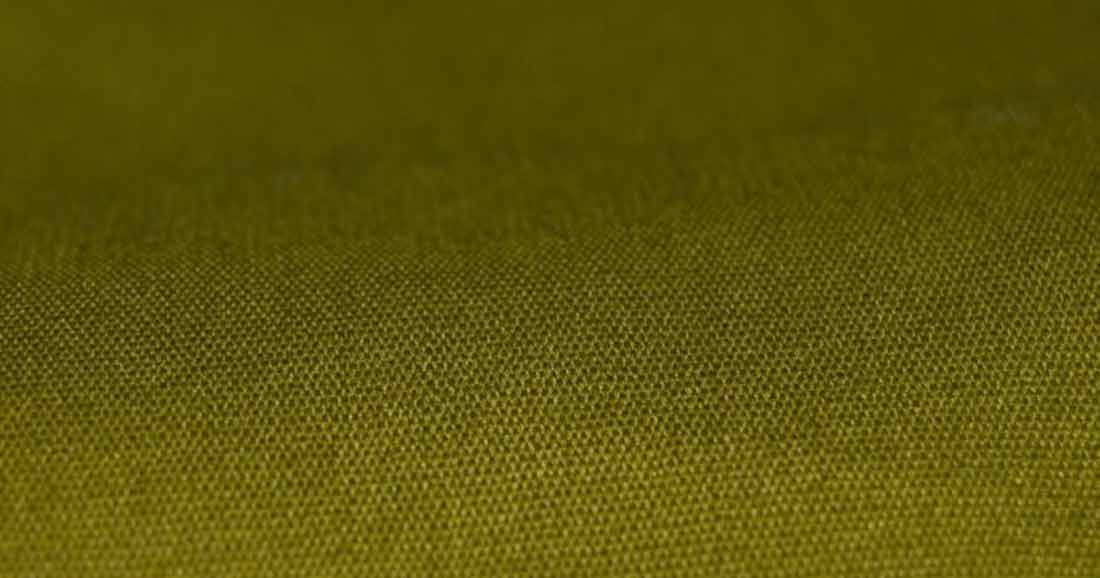
Historically poplin was made from wool and silk, also known as tabinet; however, its definition has changed over time. These days, poplin is a lightweight material that’s best suited for warm weather and hot climates due to its light and flowy nature.
Why Wear Poplin?
Here are a few reasons why poplin is such a popular summer fabric (excuse the pun) and why you’ll want to wear it as the weather begins heating up.
1. Poplin is Low Maintenance & Durable
Being a durable fabric, it’s an ideal choice for workwear that requires regular washing. And if you’re the type that is always on the go, poplin is a great option for travel due to its odor and wrinkle resistance.
2. Poplin is Odor & Wrinkle Resistant
Not only is poplin easy to clean, but it needs little ironing too and so you can wear it again and again
3. Poplin is a Versatile Fabric
It’s soft and lustrous nature makes it ideal for formal and casual wear, from the boardroom to the living room. It has a crispness to it and a natural drape that’s cooling and a great choice for summer attire.
4. Poplin is Affordable
It may look like an expensive material, but poplin is actually relatively inexpensive.
» Related: You might like this buying guide on Spring & Summer Fashion Essentials.
Downsides of Wearing Poplin
While poplin is an excellent fabric for casual or formal garments in warm climates and hot weather, there are some disadvantages to wearing the fabric.
1. It Isn’t Hardwearing
Poplin’s lightweight, flowy characteristics aren’t as hardwearing as some other summer fabrics . And so garments requiring structure or rigidity isn’t the best option for poplin fabric.
2. Poplin is Susceptible to Heat
If your poplin garment is made from 100% cotton then it could shrink in a hot wash. And you definitely don’t want to dry your poplin clothing. Stick to warm or colder setting when laundering poplin.
WHAT IS THE COOLEST FABRIC FOR SUMMER?
Many of the fabrics mentioned above or excellent for keeping you cool this summer. Below we’ve got 5 more lightweight summer fabrics that will cool your body and keep you feeling comfortable.
6. RAYON
Like many of the other fabrics in this guide, rayon is a versatile fabric that shares many advantages that cotton has. It is often used as an affordable silk alternative because of its breathable and moisture-wicking capabilities as well as stretchiness and softness.
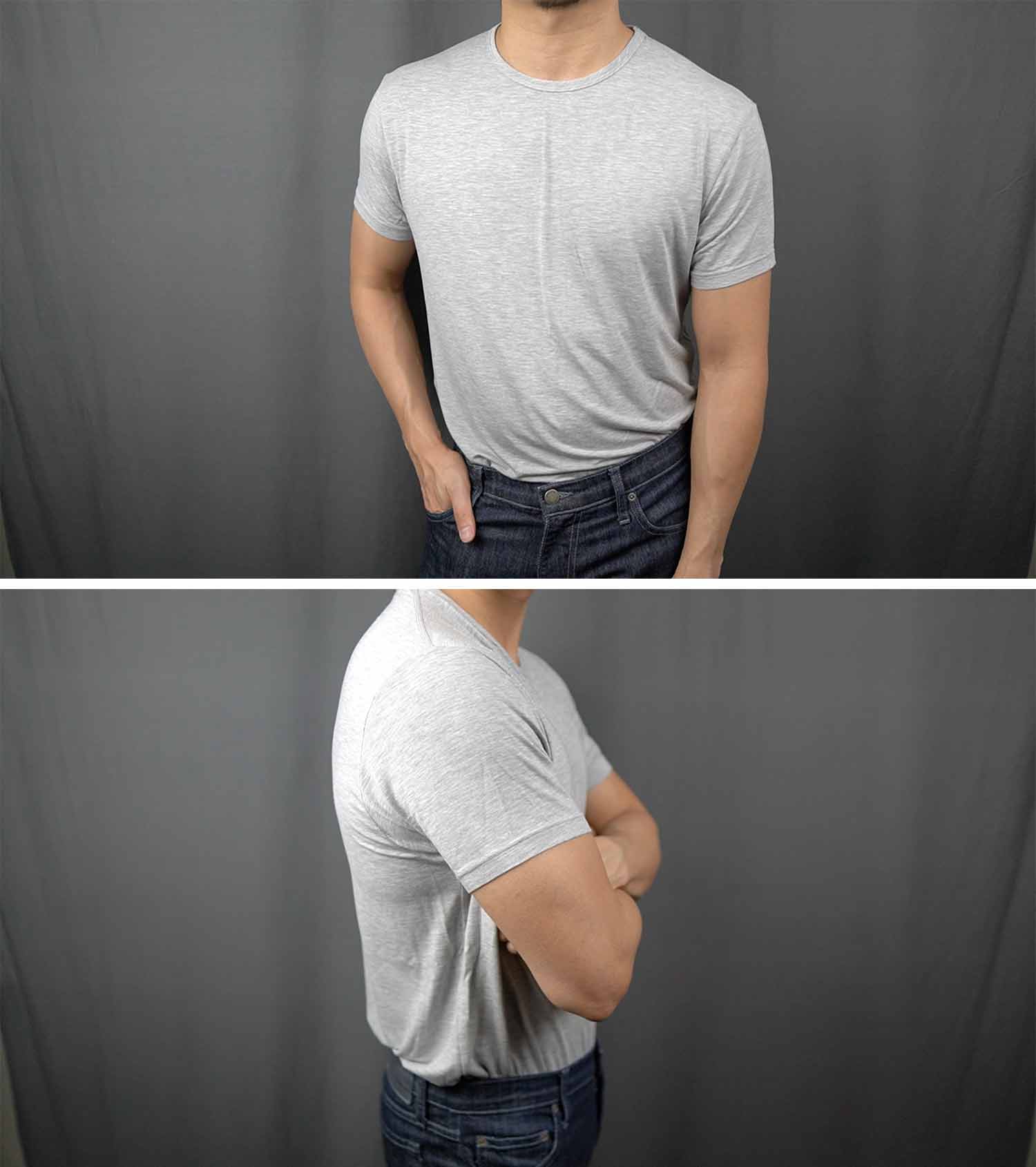
What is Rayon Fabric?
Rayon, also known as viscose is a semi-synthetic 100% cellulosic fiber that’s soft, comfortable, absorbent, and breathable, all the while taking dyes easily and coming from renewable raw materials. It’s a semi-synthetic fabric that’s the third most popular textile fiber in the world.
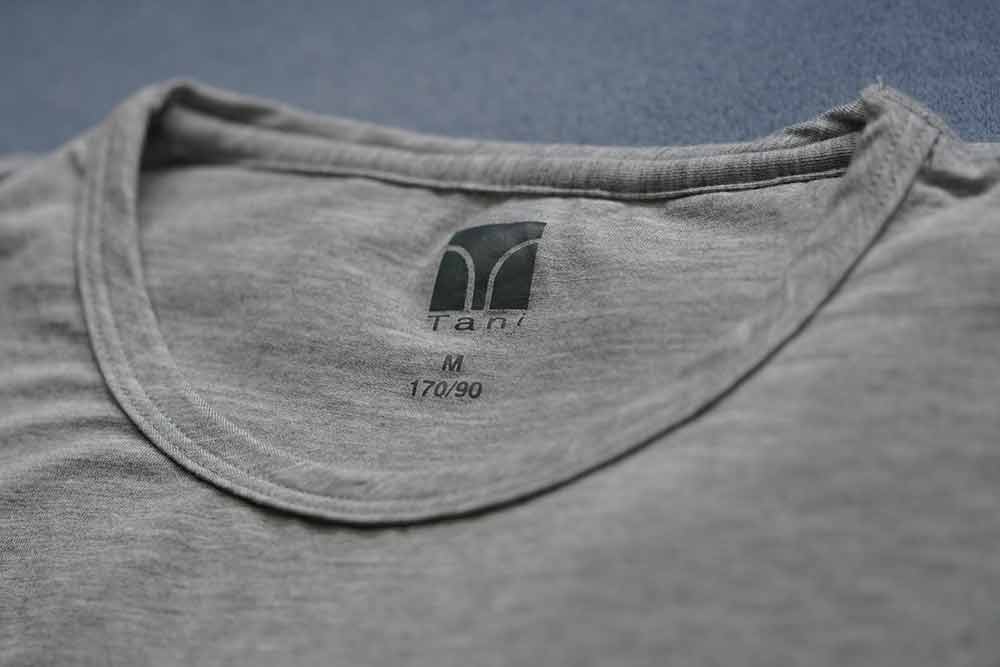
Why Wear Rayon?
Rayon is a breathable, moisture-absorbent fabric that’s a popular choice for athletic and casual wear. You’ll find it in shirts, trousers, dresses and outerwear.
1. Rayon is Versatile
Like many of the other fabrics on this list, rayon is as versatile as they come. It has a remarkable ability to resemble other fabrics because it takes on properties of cotton, wool, silk and other types of clothing.
2. Rayon is Soft, Smooth, Cool & Comfortable
The beauty of rayon is that it has a soft and smooth texture that feels comfortable against the skin. It has a similar comfort to natural fibers like cotton and linen.
3. Rayon is Breathable & Moisture Absorbent
Believe it or not, rayon is more absorbent than cotton and so this trait makes rayon an ideal fabric for activewear and hot, humid climates since it’ll absorb moisture away from the skin. Be cautious as the material can shrink when wet. All in all, rayon is a cool, breathable material that is great for athletic wear.
» Related: You might like this in-depth guide on Gym Essentials to Boost Your Workout & Look Good.
Downsides of Wearing Rayon
Here are the few disadvantages to this versatile hot weather fabric
1. Washing Instructions can Be Difficult
Since rayon is often blended with other fabrics like cotton and polyester, laundering it takes extra consideration. Most experts recommend to hand-wash rayon which is always a safe choice, but also not the most convenient.
2. Rayon is Not a Durable Fabric
Your washing machine can cause rayon to shrink, stretch or bleed onto other articles of clothing. It’s exceptionally lightweight and has a flowy drape like silk, and so it’s best treated with caution.
Is Modal as Breathable as Rayon?
Modal is actually a common type of rayon that’s also a semi-synthetic fabric that’s made from beech tree pulp and is used mainly for clothing like pajamas, underwear and household items like towels and bed sheets. The other 2 types of rayon are viscose and lyocell.
7. SEERSUCKER
Seersucker is synonymous with spring/summer apparel and is certainly a summer staple, especially among the sartorially minded. It’s looks similar to linen, but has natural creasing that gives it its uniqueness. There are many reasons seersucker is such a popular summer fabric.
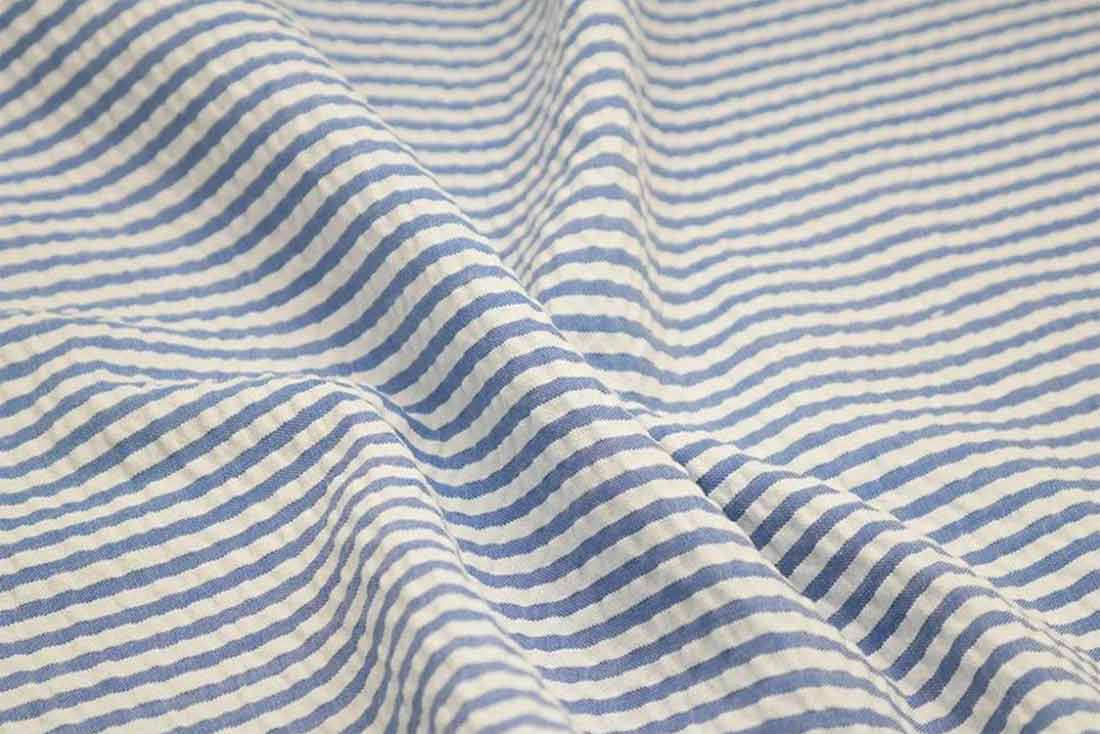
What is Seersucker?
Seersucker isn’t a type of fabric, instead it refers to a style that’s thin, puckered cotton or cotton blended fabric, derived from the Persian word for milk and sugar or shīroshakar. It’s woven in such a way that bunched threads cause the fabric to rise off the skin. Seersucker’s natural wrinkling makes it breathable and airy.
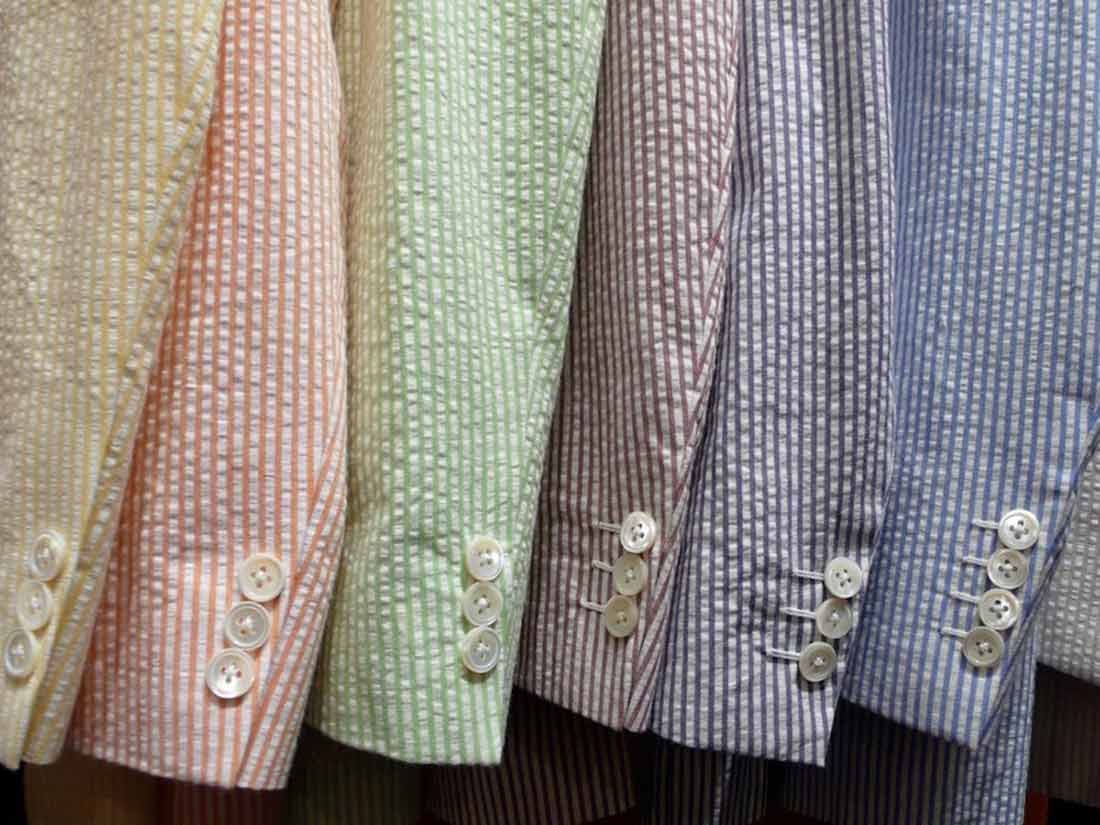
Why Wear Seersucker?
Seersucker is a go-to weave for jackets, trousers and shorts, combining hints of collegiate prep and southern gentleman. Here are a few of the benefits of wearing this stylish fabric.
1. Seersucker is Stylish
This lightweight, breathable summer fabric has an unmistakable wrinkled look that is popular in the Southern United States. It’s often found with vertical stripes, seamlessly blending the worlds of casual and formal fashion. It’s effortlessly stylish and smart casual.
2. Seersucker is Ideal for Travel
Since this fabric type is naturally wrinkled, it won’t show signs of wrinkling since it’s already pre-wrinkled!
3. Seersucker is Trendy
Seersucker is definitely a trendy fabric type, especially for summer. It’s an ideal fabric to wear for outdoor summer events like a wedding or picnic date.
4. Seersucker Will Keep You Cool
It has puckering that allows for ample airflow which will keep you feeling cool and comfortable on those scorching hot and humid summer days.
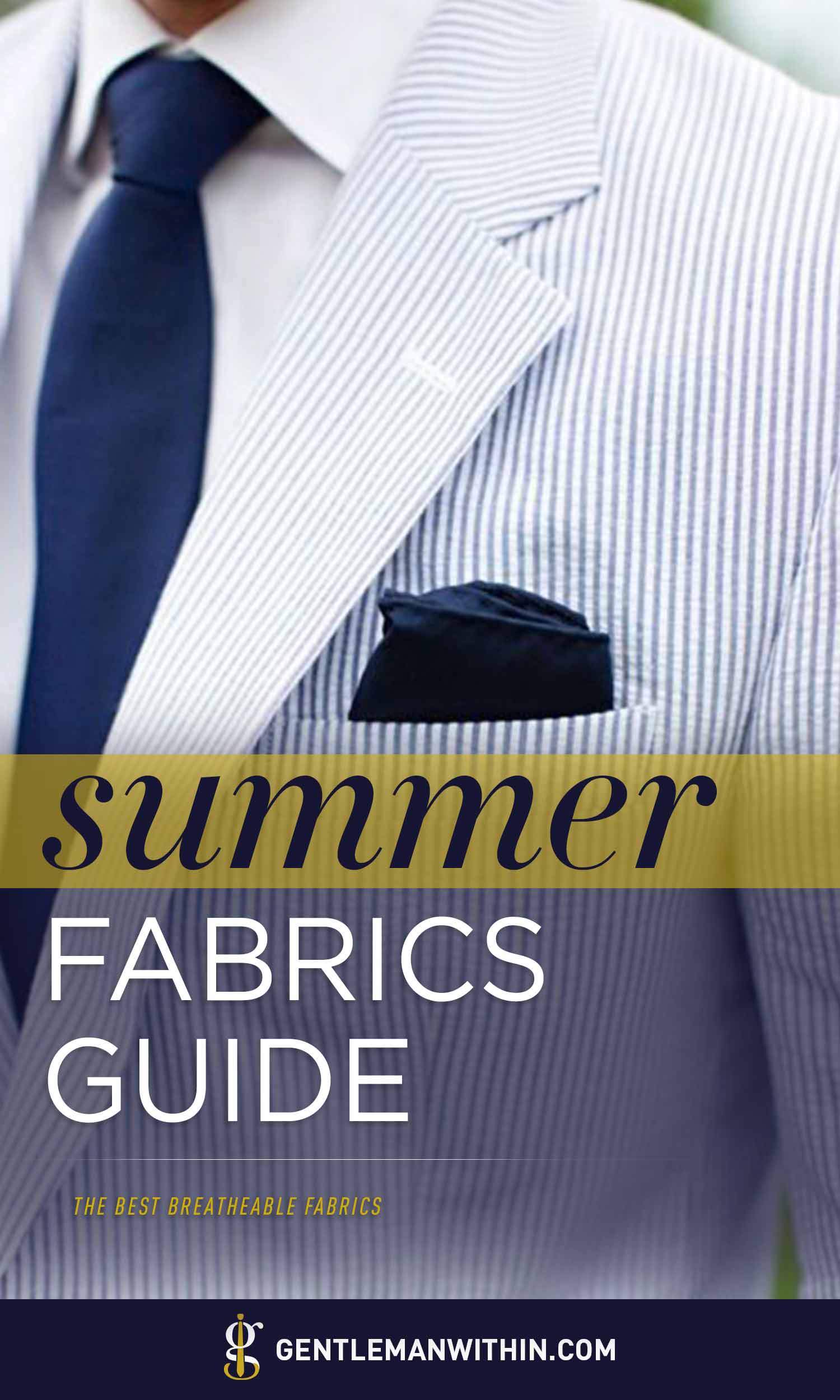
Downsides of Wearing Seersucker
1. Not Resistant to Dirt and Water Spots
Seersucker will show any type of dirt and grim or water marks and so it’s best to be cautious of where you’re wearing your seersucker attire.
2. It Wrinkles A lot
For some, the inherent wrinkles of seersucker may be a turn off, giving off the appearance that you didn’t even care to iron your clothing, but those in the know won’t pay any mind.
Is Seersucker Breathable?
Emphatically, yes. Seersucker is many stylish people’s fabric of choice in the sweltering summer heat due to its inherent breathability and airiness.
Does Seersucker Wrinkle Easily?
Yes, seersucker is naturally wrinkled and so it’s a fantastic fabric for travel. Since its wrinkled appearance is part of its charm, you’ll look intentionally stylish whether you’re at the backyard BBQ or traveling for leisure.
» Summer Reading: You might like this style guide on How to Wear Shorts this Summer with Style.
How to Wear Seersucker Clothing
Here’s a myriad of ways that you can wear seersucker in the summer to keep you cool and stylish.
8. WOOL
You may be thinking, isn’t wool a winter fabric? It sure is, but a lightweight wool can manage temperature and moisture, making it an excellent option to wear in the summertime.
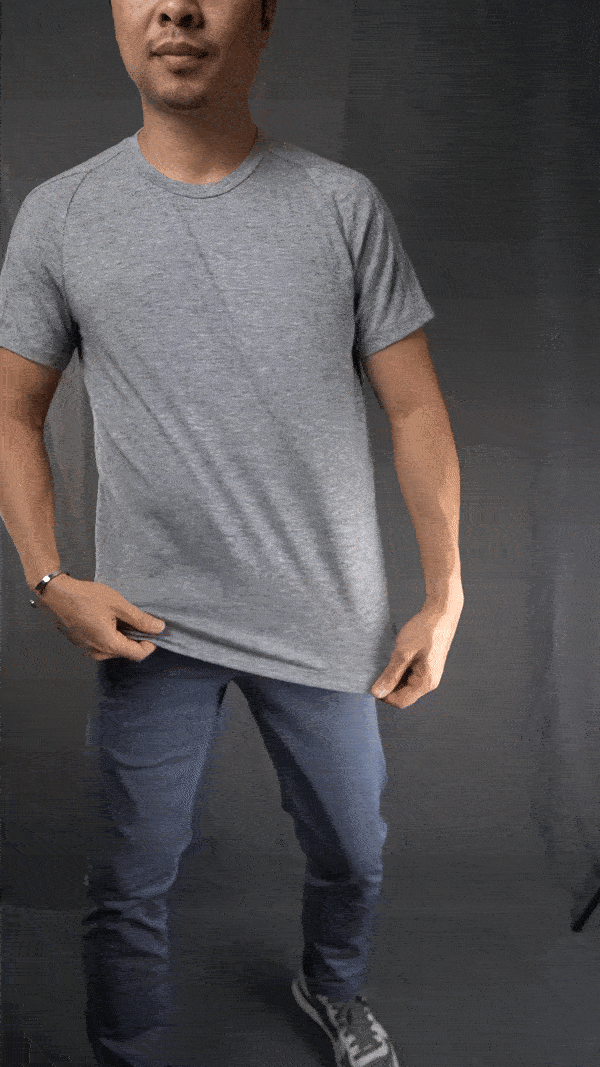
What is Wool Fabric?
Wool fabric is made from natural fibers that form the fleece of animals such as goats, sheep, rabbits, camels and more. It’s a raw material that’s primarily made up of keratin-based proteins, making it an extraordinarily elastic material.
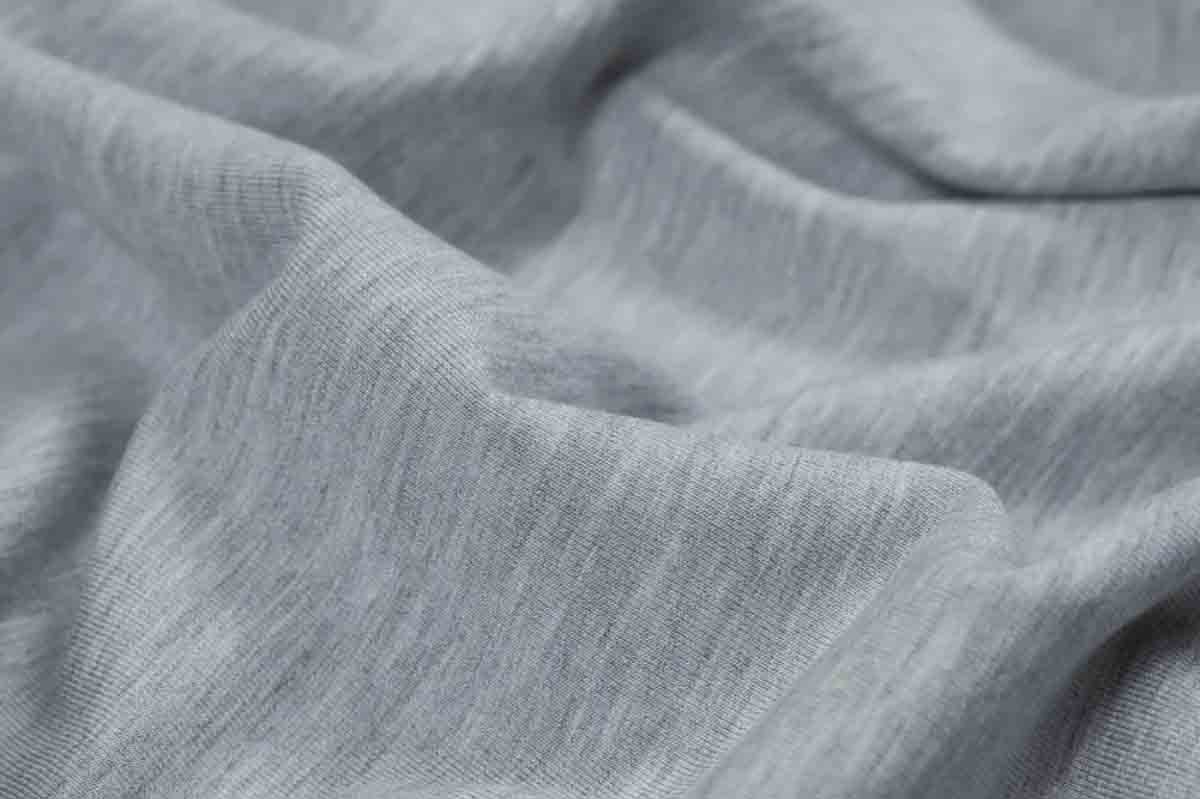
Why Wear Wool?
There are many different types of wool fabrics. Here are a few advantages to wearing this smart fabric.
1. Wool is Temperature and Moisture Regulating
Wool conducts heat as well as retracting moisture away from the skin. And so if you wear a lightweight wool in the summer, you’ll sweat less. It’s likened to wearing air conditioning on your skin, allowing you to stay cool and dry throughout the day.
This temperature and moisture regulation makes lightweight wool a perfect candidate for summer suits. Many people think winter and colder weather when it comes to wool, but wool is exceptionally well-suited for summer too.
2. Wool is Durable
Wool is a lightweight, yet strong fabric that’s durable and long lasting. In fact wool fibers have a natural elasticity that can withstand being bent 20,000 times without breaking, a much higher count than cotton (3,000), silk (2,000) and rayon/viscose (75).
This allows for wool to yield a longer life than other types of fibers. On top of that, wool is also flame resistant as well as water repellent which makes it a viable option for home insulation.
» Readers’ Favorite: You might like this hands-on review of the Best No-Show Socks tested & compared over the years.
3. Wool is Antibacterial and Antimicrobial
Wool fibers contain a thin waxy coating that inhibits the growth of mold and bacteria. In fact, wool products don’t need to be washed nearly as much as other types of fibers (especially synthetics).
Additionally, wool doesn’t require much maintenance. Cleaning wool is easy, especially when removing stains. This is due to the series of overlapping scales and air pockets which prevent dirt or liquids to penetrate the fabric.
4. Wool is Hypoallergenic
Since wool is resistant to bacteria like mold, mildew, and dust mites it makes for a fantastic fabric for those who have allergies.
5. Wool is Sustainable
Since wool is a natural product and completely renewable, it makes for an incredibly eco-friendly fabric. Additionally, wool is 100% biodegradable and compostable.
This makes raw wool an ideal fabric for those who care about the environment.
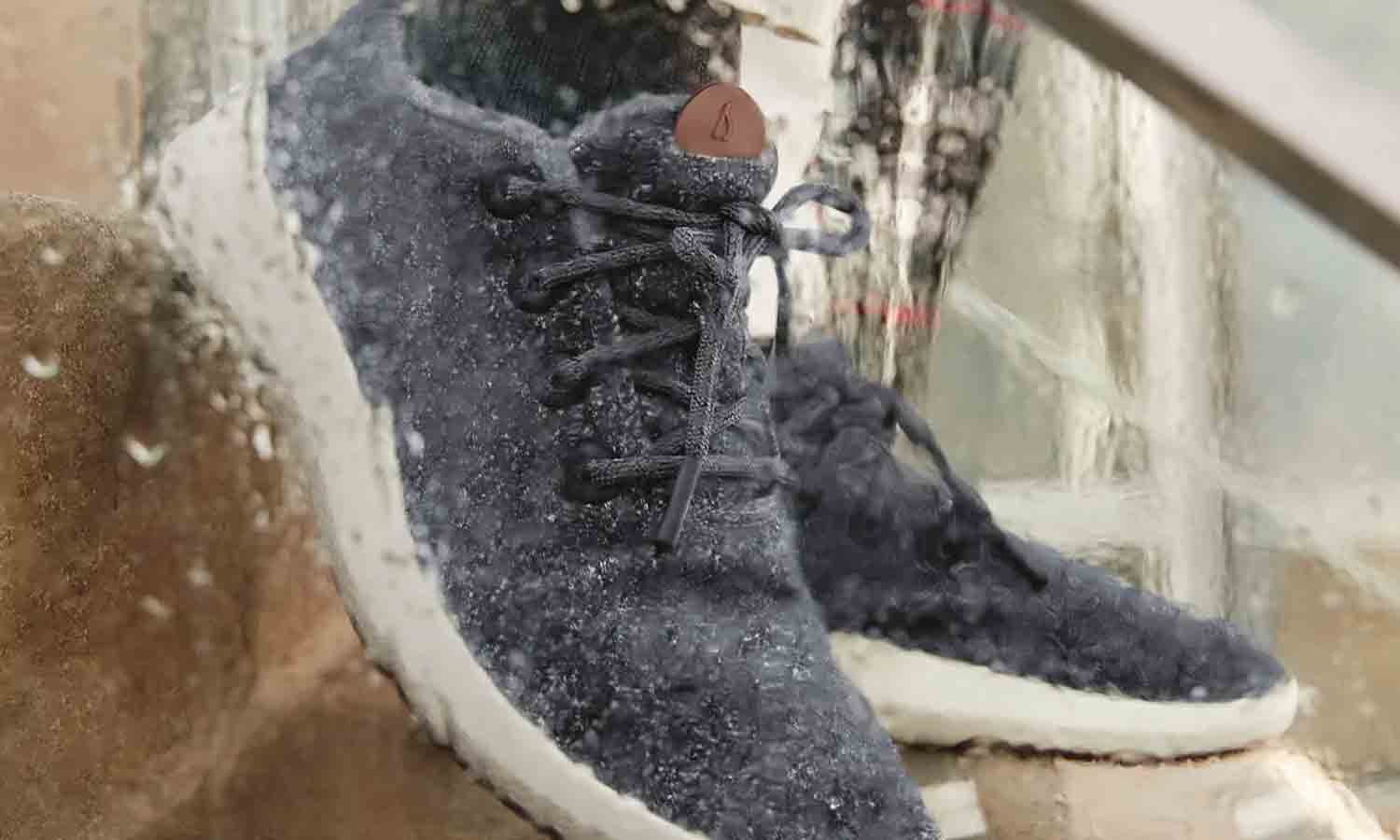
Downsides of Wearing Wool
These are some of the disadvantages to wearing wool in the summertime.
1. Treatment of Animals in Question
A big downside is the treatment of sheep in during the shearing process. Sure there are farmers who are better than others, but it’s almost a certainty that animals do get harmed when turning sheepskin into woolen clothing.
2. Wool Can Be Quite Expensive
Wool is expensive mainly due to the processing cost, cleaning and preparation, rather than the actual cost of the raw material.
3. Some Wool Can Be Uncomfortable
There are varieties of wool that can be itchy to sensitive skin, especially lower quality woolen fabrics that have shorter, coarser fibers.
9. BAMBOO
The bamboo textile is any cloth, yarn or clothing made from bamboo fibers. And technically most bamboo fabric is actually a type of rayon.
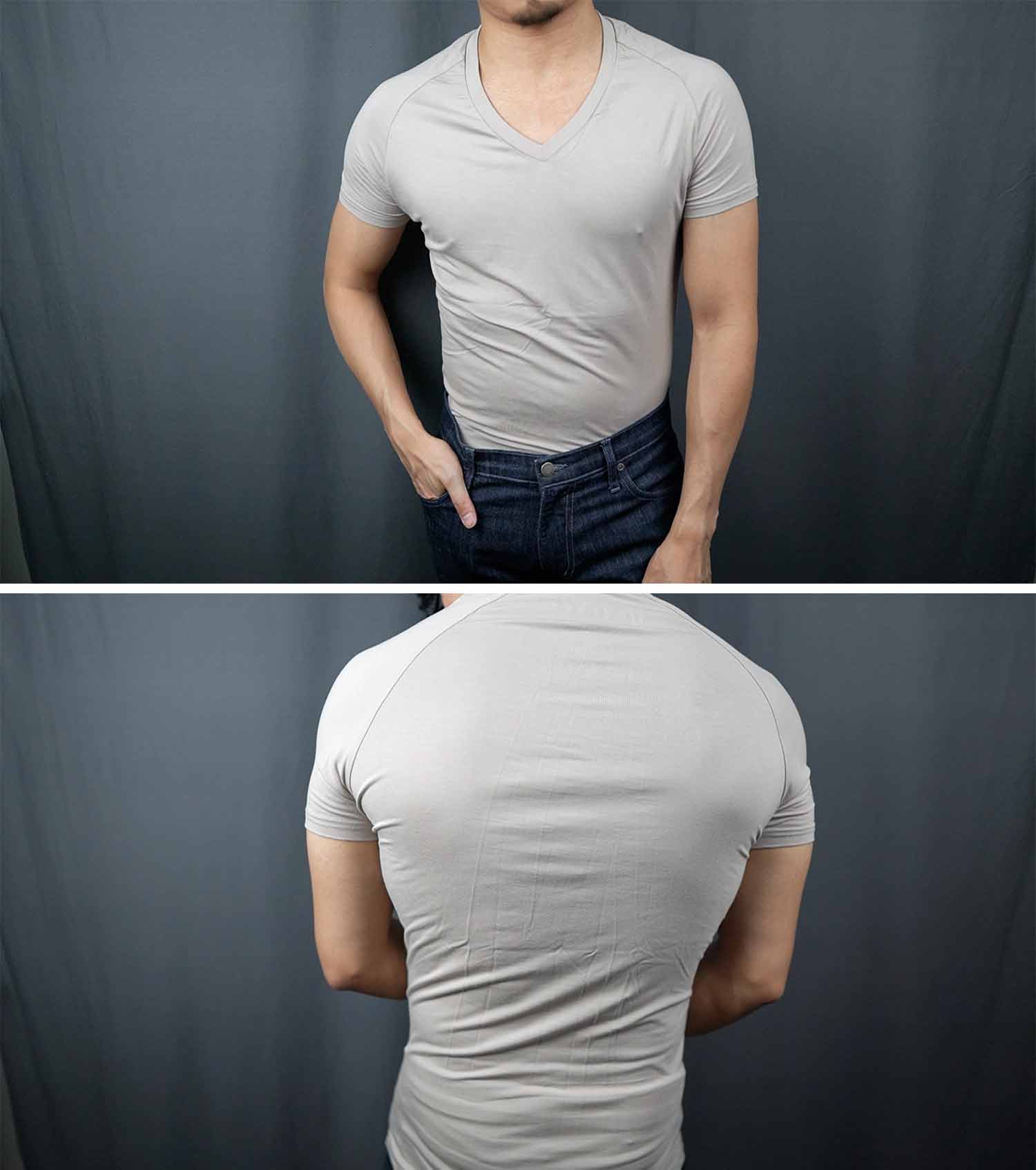
What is Bamboo Fabric?
Bamboo fabric is a man-made fabric that’s made from a natural fiber. Its key traits are its breathability, tremendous moisture-wicking properties, good heat retention, stretchability and clean silky drape.
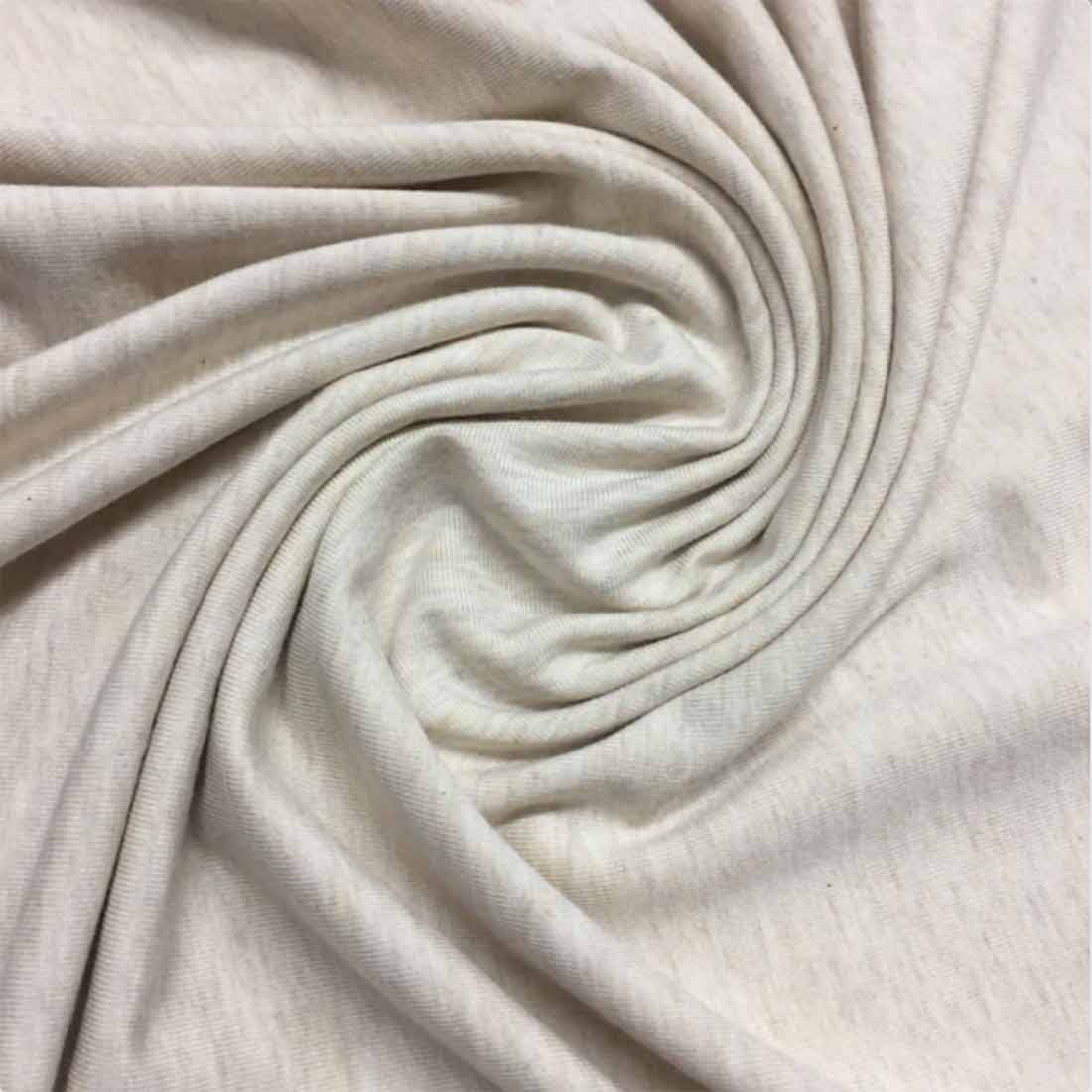
Why Wear Bamboo?
Here are 4 reasons to wear bamboo fabric this summer season.
1. Bamboo is Naturally Antimicrobial
Bamboo is anti-bacterial; however, many of the anti-bacterial properties are removed through the processing of bamboo fibers.
2. Bamboo is Soft & Highly Absorbent
Bamboo has tremendous moisture-wicking properties. It’s a fabric that’s soft and comfortable on the skin. Furthermore, it will also keep you dry by drawing sweat and moisture away from your skin.
3. Bamboo Remains Soft After Many Washes
Bamboo fabric is hands down one of the softest natural fibers, even when mixed with other fibers. It’s often mixed with other fabric types because bamboo tends to break down more rapidly.
4. Bamboo is Easily Organically Grown
Bamboo is the quickest growing woody plant in the world and so it’s easy to grow naturally.
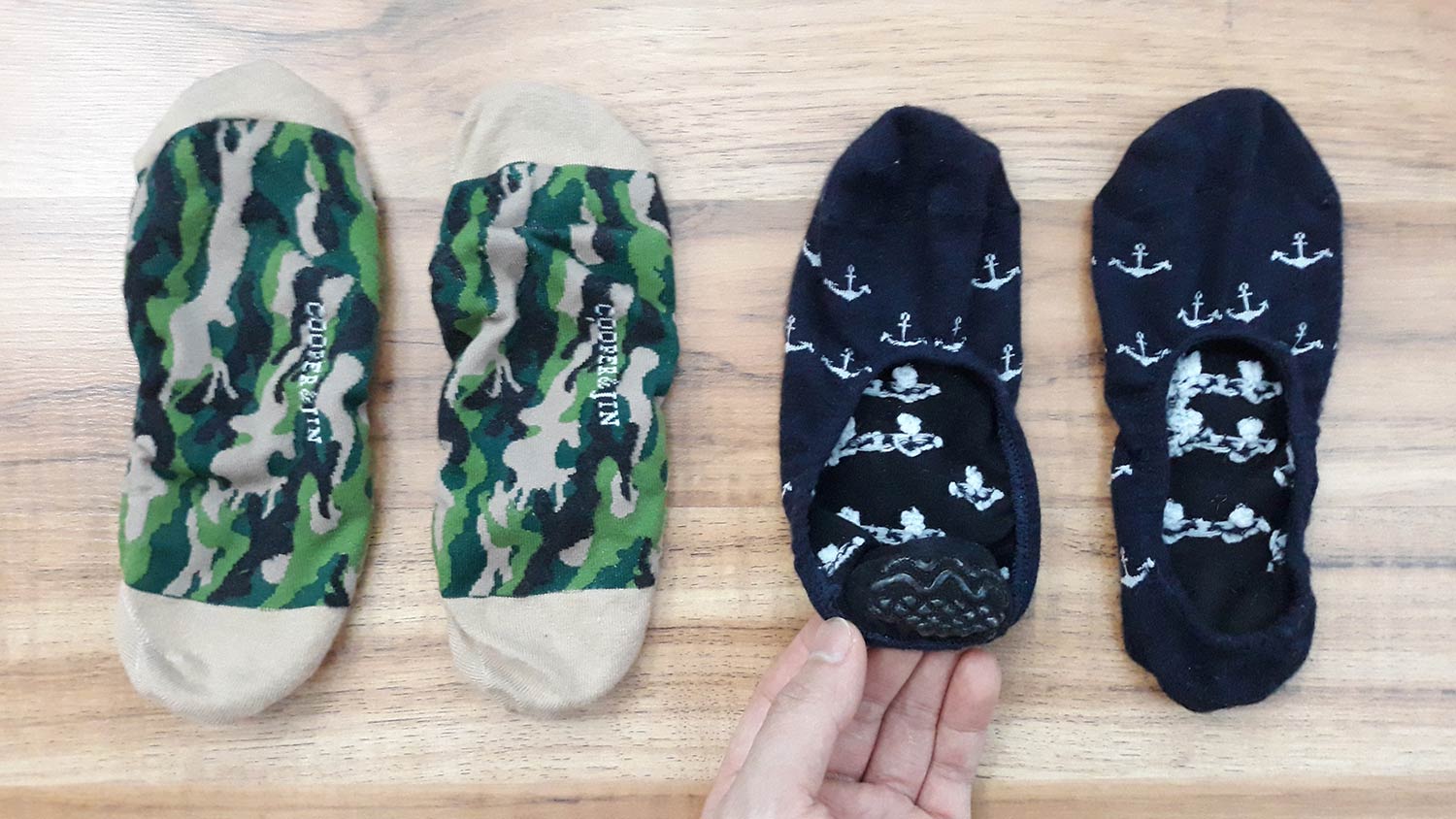
Downsides of Wearing Bamboo
While it’s a great summer fabric, there are some disadvantages to bamboo fabric.
1. It’s Not the Most Sustainable
If bamboo fabric undergoes chemical processing then it could pose a danger to the environment and be harmful to human health.
2. Shrinkage is Common
Bamboo fabric tends to shrink faster and more often than cotton.
3. Bamboo Fabric is Expensive
Natural bamboo tends to be more expensive than the rayon type.
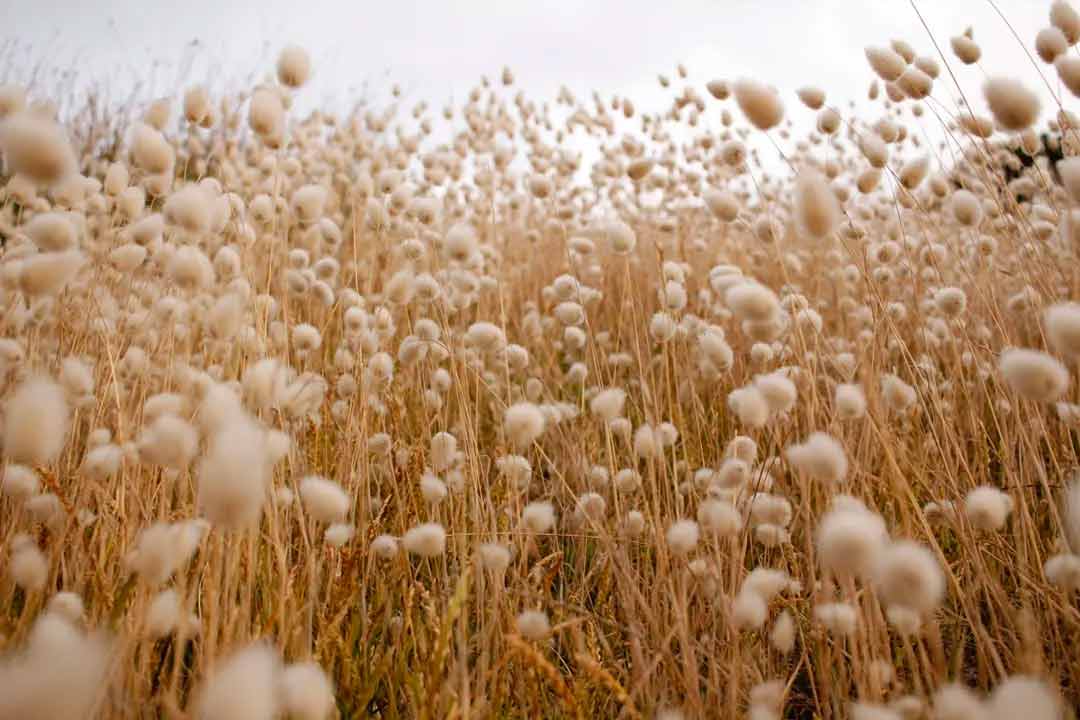
10. HEMP
Hemp is one of the world’s most environmentally friendly fibers and is one of the world’s most useful plants. Today hemp clothing is making a comeback as a sustainably, eco-friendly fabric that no longer carries the negative stigma of marijuana.
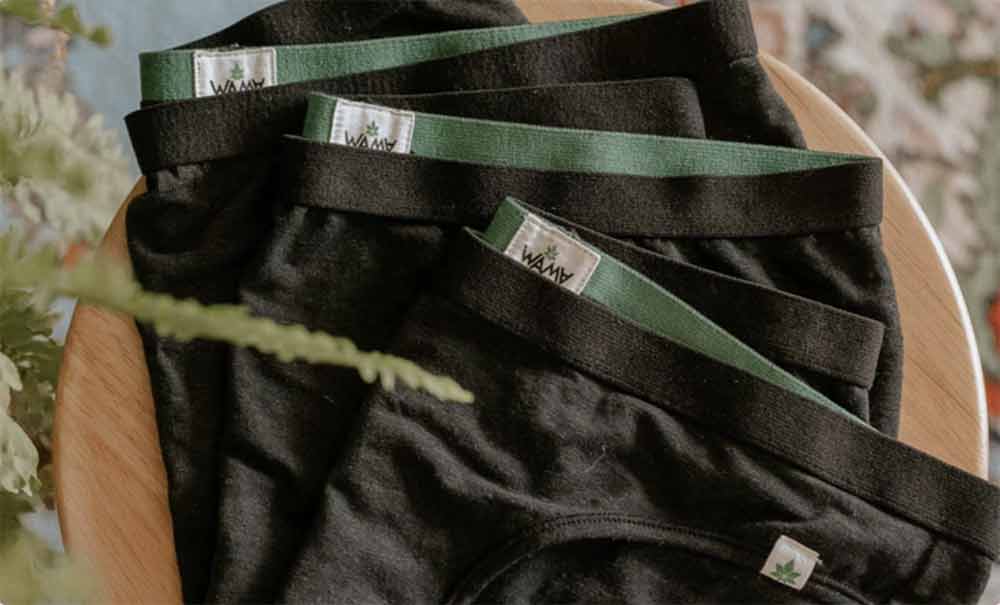
What is Hemp Fabric?
Hemp fabric is a sustainable textile made of fibers of a high-yielding crop in the cannabis sativa plant family. It was historically used for industrial purposes, with rope and sails, but is now used in food and clothing. It’s known as one of the most versatile and durable natural fibers.
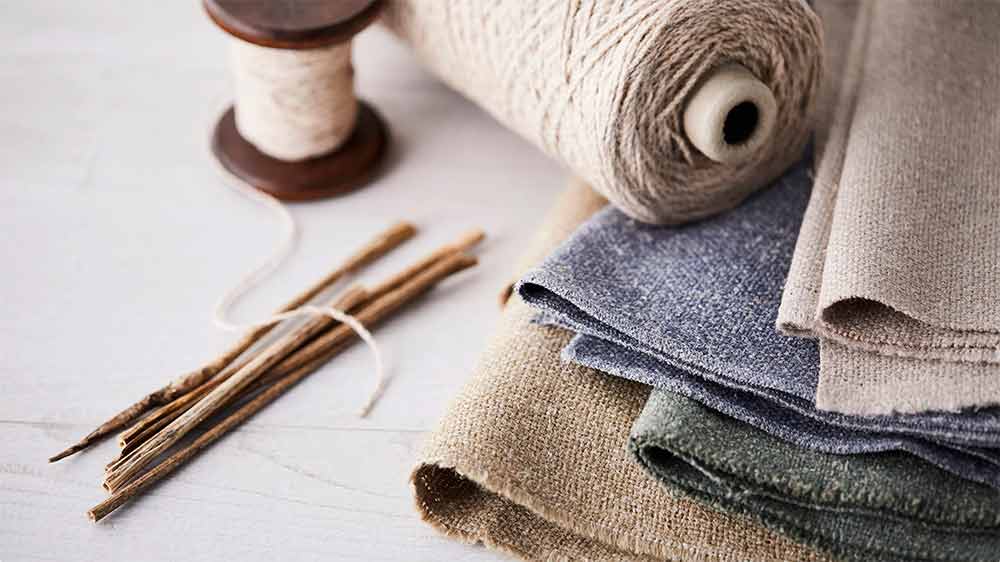
Why Wear Hemp?
Here are a couple of reasons why you’ll want to wear help, not just for summer, but year-round.
1. Hemp is Great for Performance Wear
Being the breathable fabric that it is, it tends to stay clean and odorless for longer. Additionally its tightly woven fibers can protect you from the sun’s harmful UV rays.
2. Hemp Doesn’t Need Pesticides
Hemp is a sustainable fabric like many of the others in this roundup. Hemp requires no pesticides to grow and doesn’t require much fertilizer either. It’s self-sustaining and can grow in the harshest conditions.
3. Hemp Lasts Long and is Biodegradable
Hemp is a quality fabric that breaks in over time, getting softer much like cotton. The added benefit being that hemp lasts even longer than cotton. And when it is time to retire your garments, they’re biodegradable.
4. Hemp Has Small Water Footprint
Compared with cotton, hemp uses much less water. It only requires half the amount of water than cotton at 700 gallons, compared to 1,400 for cotton.
» Summer Reads: You may be interested in this guide on the Best Canvas Belts for Summer Feat. Anson Belt & Buckle.
Downsides of Wearing Hemp
While hemp is a wonderful fabric, there are some disadvantages.
1. Hemp Can Be Prone to Wrinkling
Like other natural fibers, hemp is prone to wrinkling which can be a slight inconvenience.
2. Hemp is More Expensive
Generally, hemp is more expensive than other fabrics like cotton or linen, the reason being that it’s not as mainstream as the other fibers.
3. There’s Still a Stigma Around Hemp
There’s no escaping hemp’s association with its cousin, marijuana. Even till this day, many misunderstand the distinction between the two.
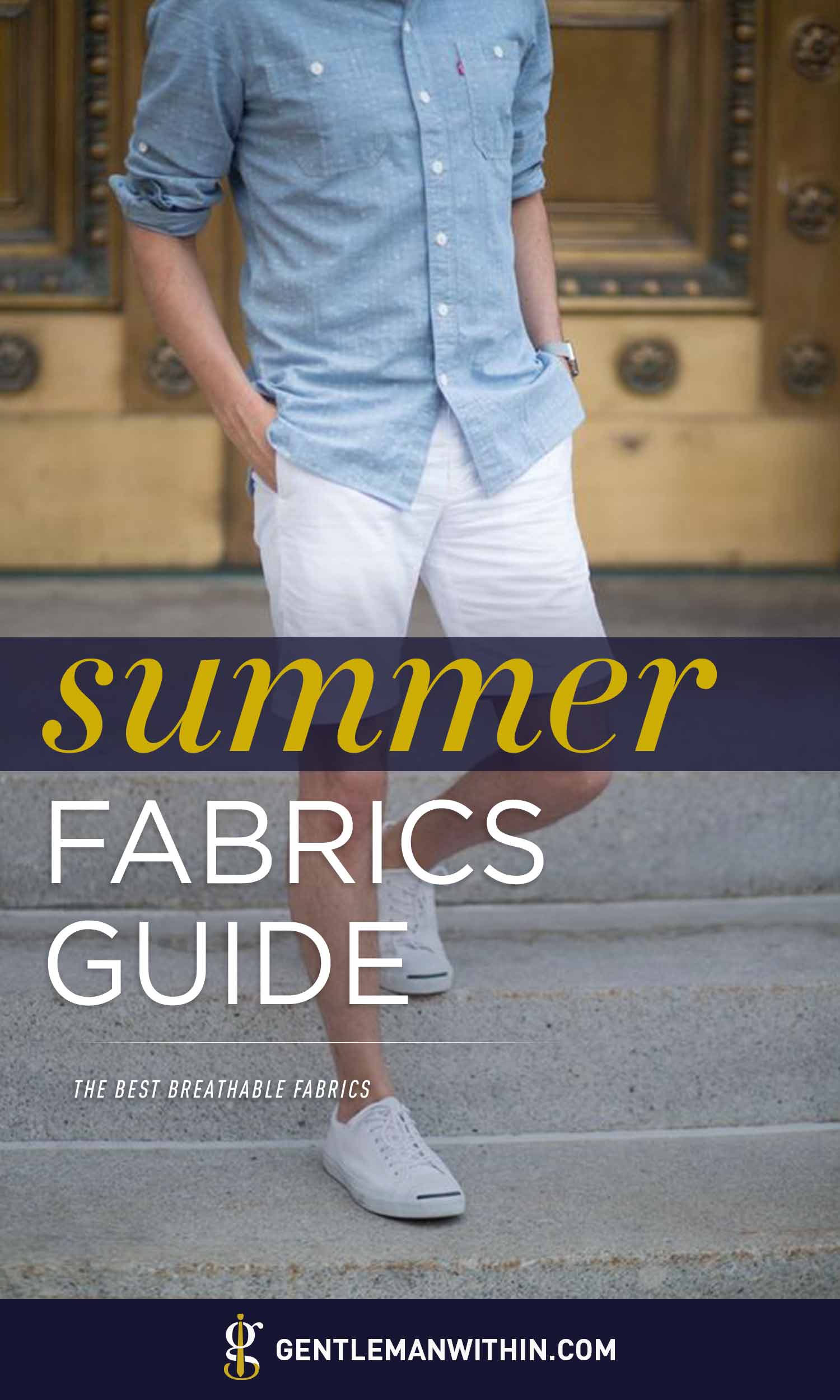
What summer fabrics are you looking to incorporate into your style?
Let’s continue the discussion over in the Gentlemen Within Private Facebook Community.
Looking forward to seeing you in there.
LIKE WHAT YOU READ?
Get more posts like this plus style tips & advice delivered straight to your inbox.


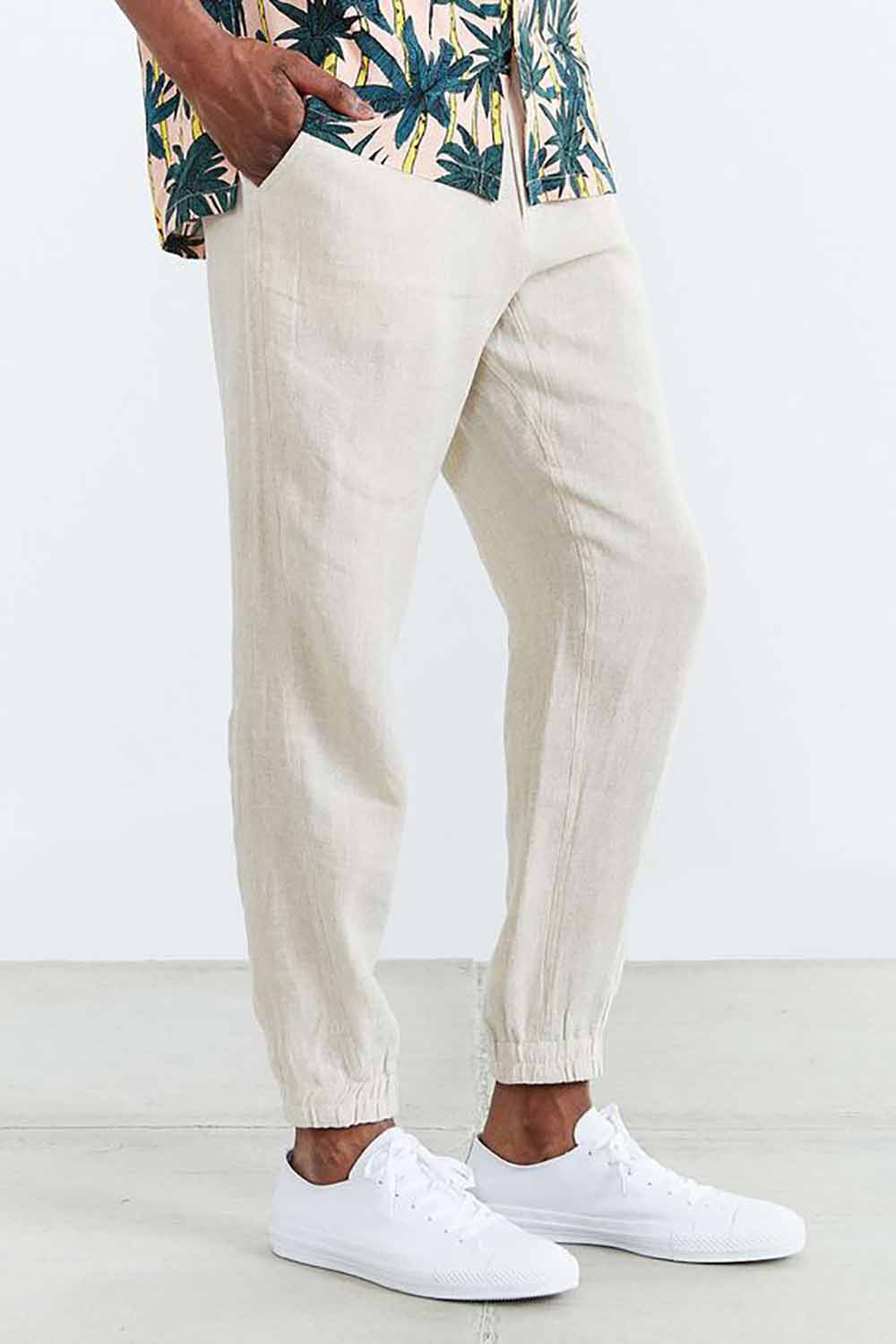
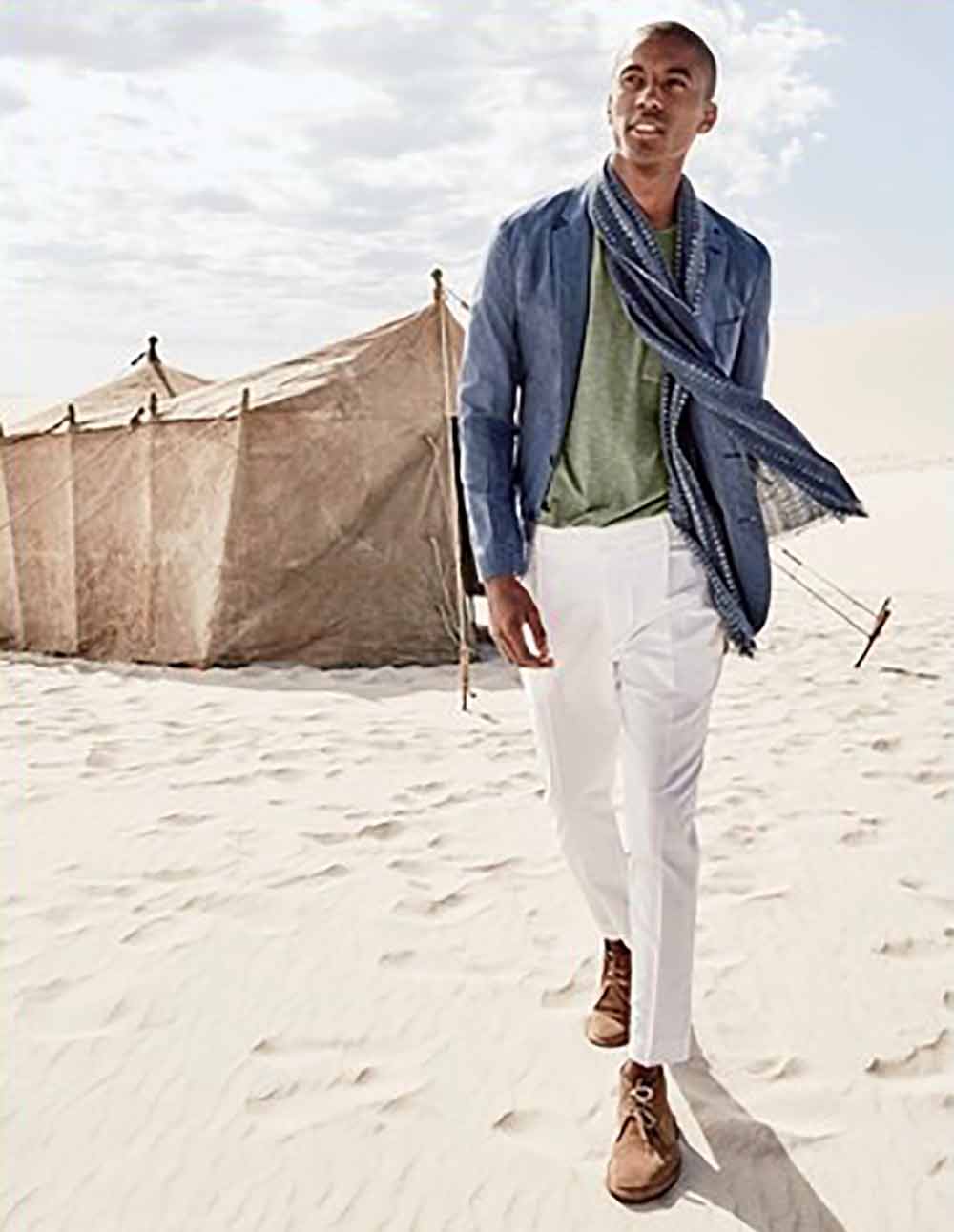
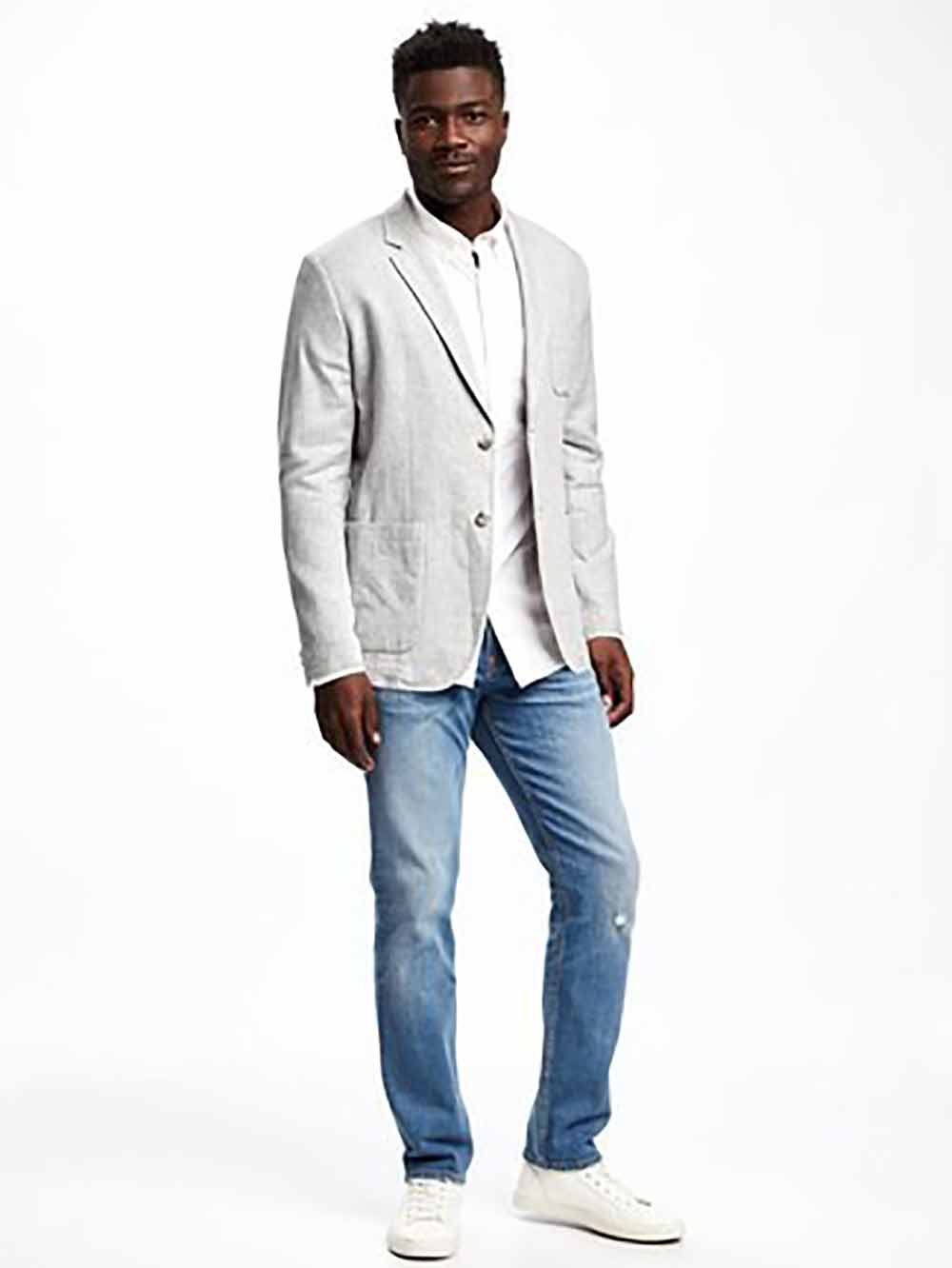
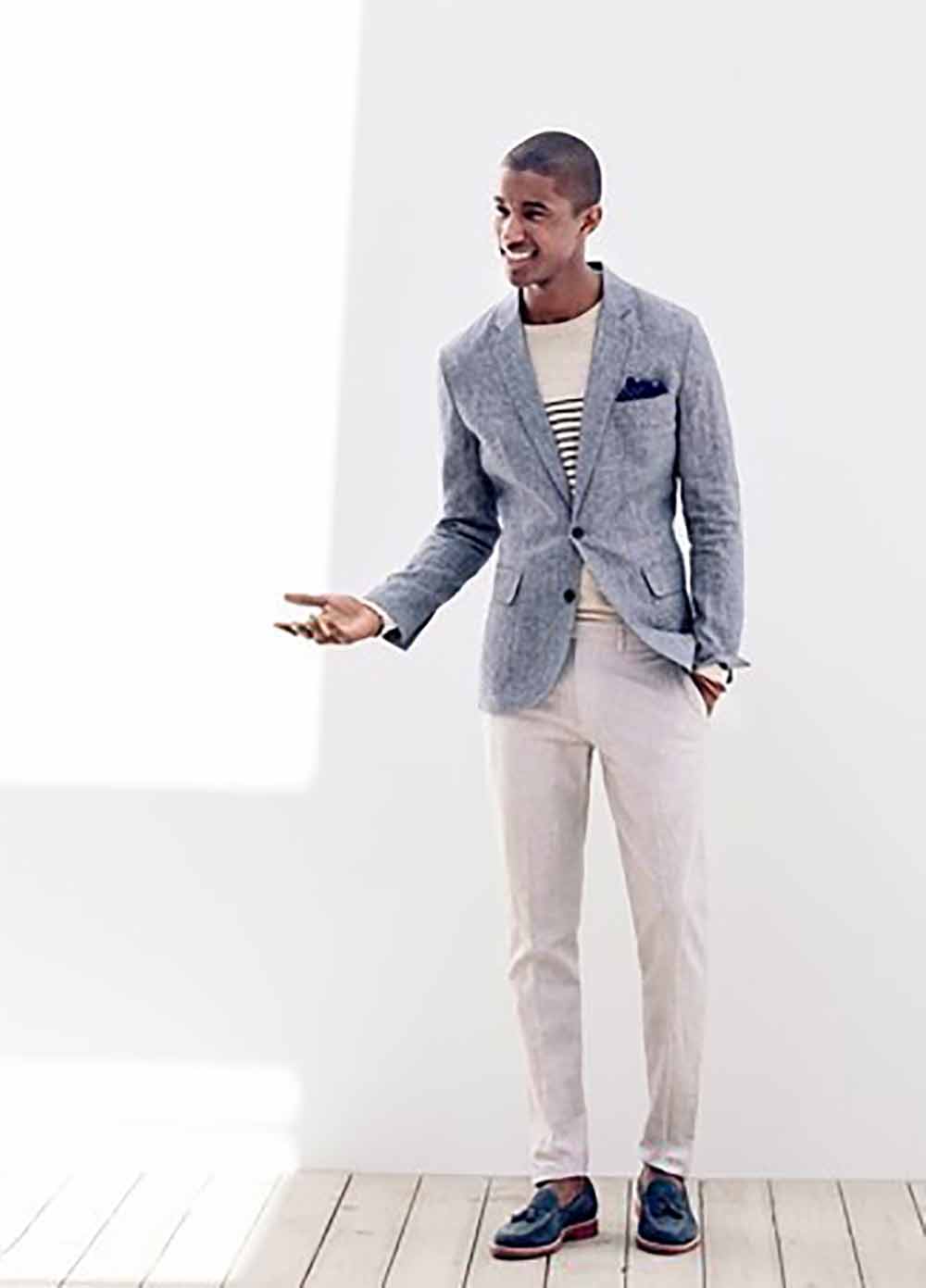
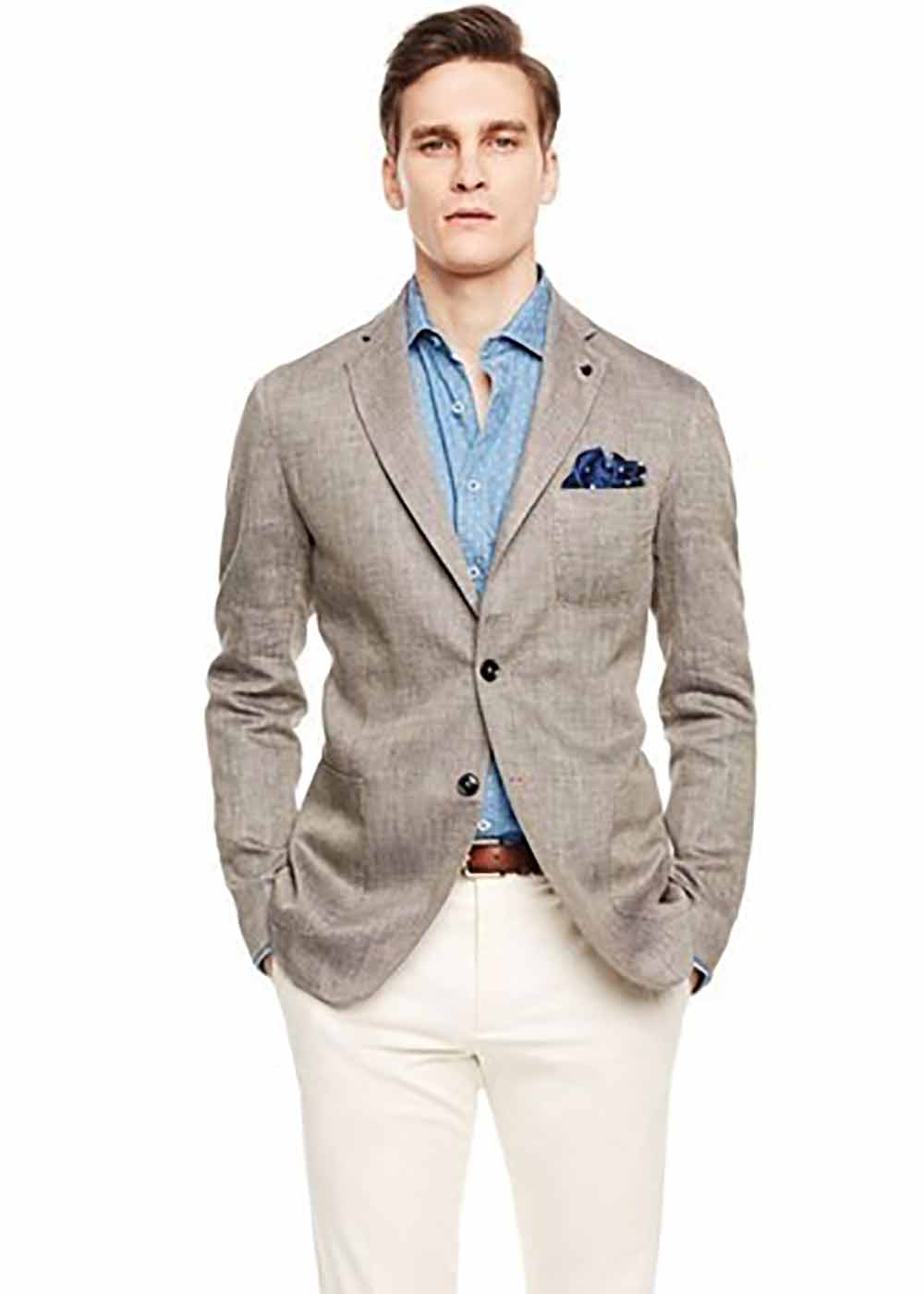

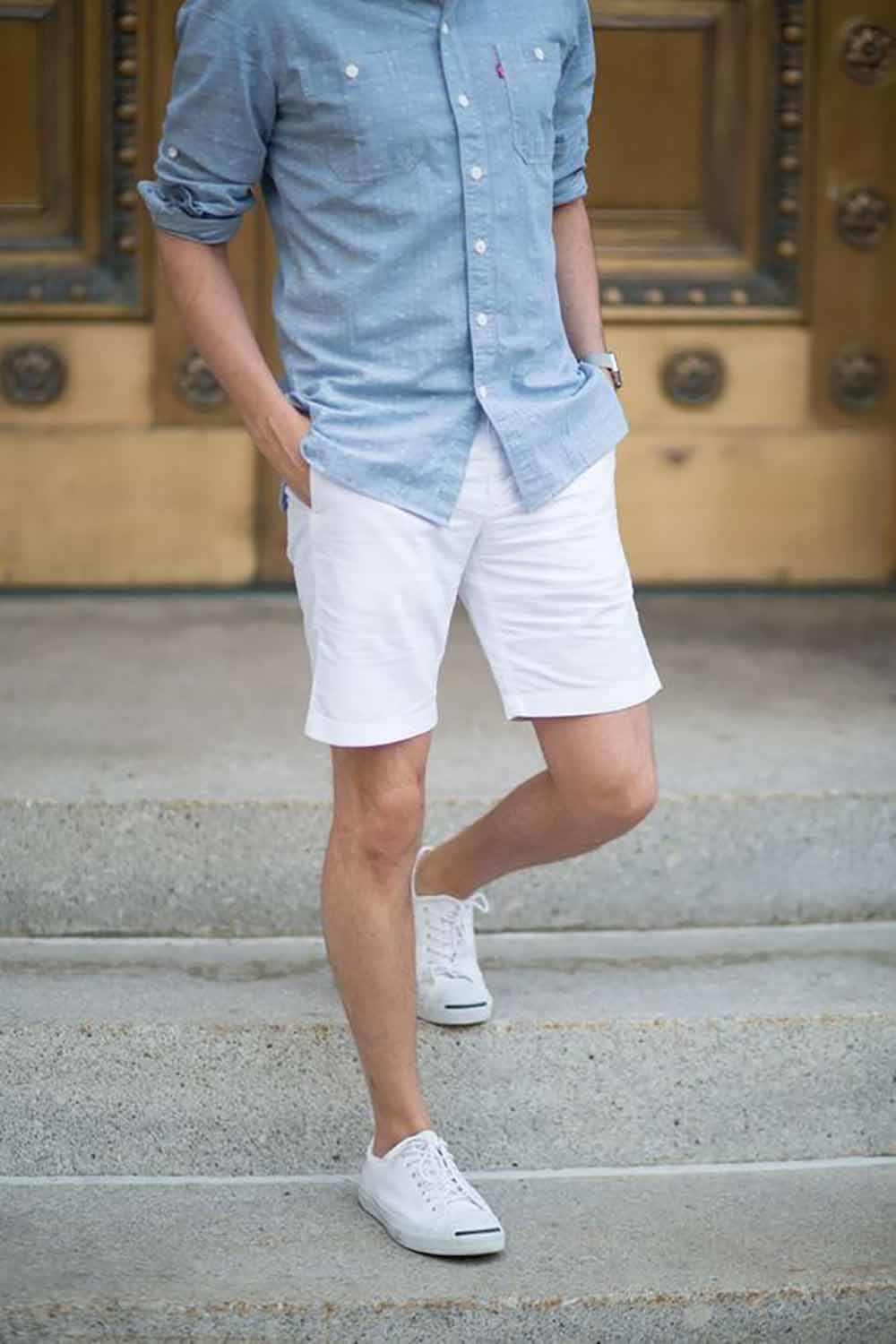
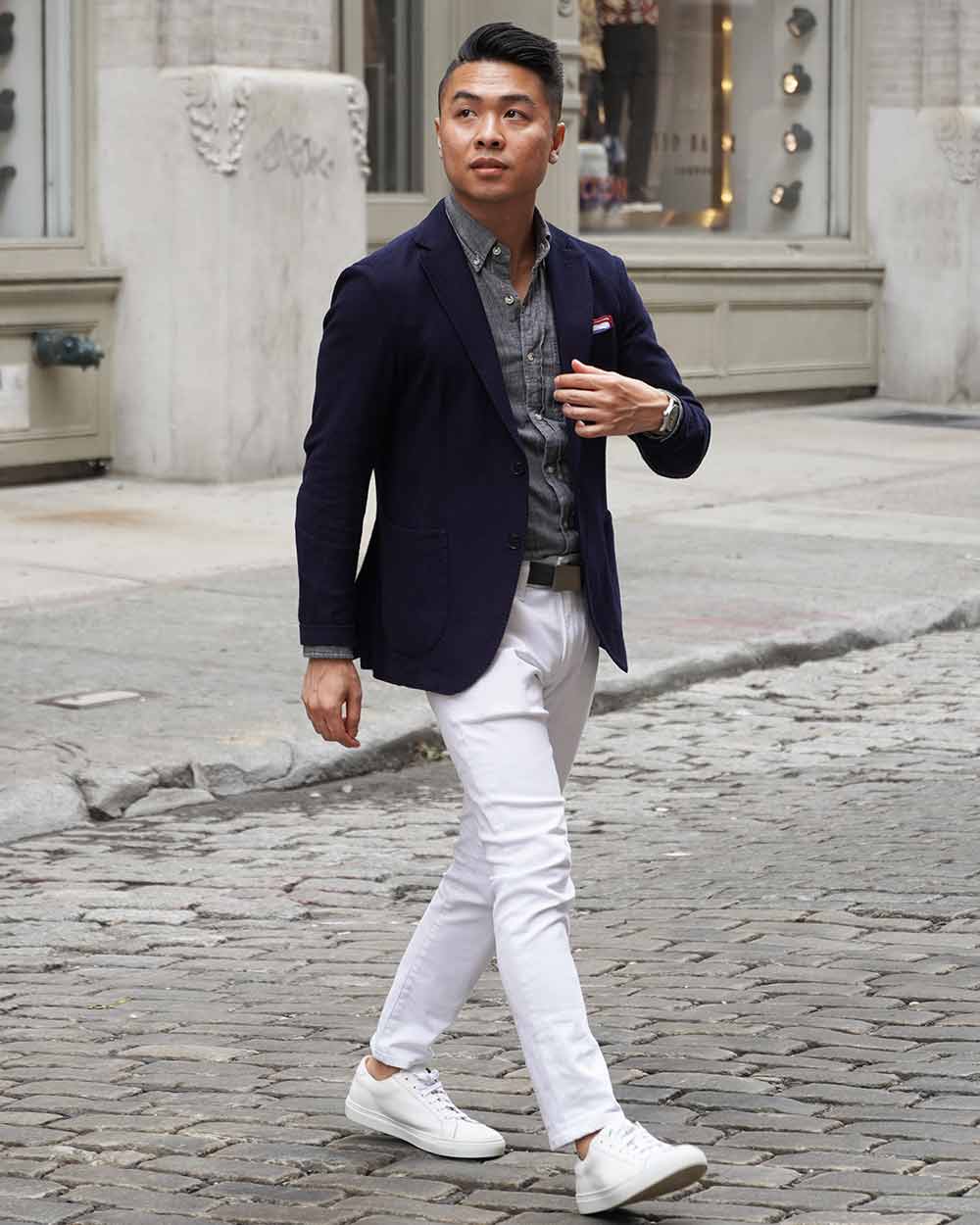

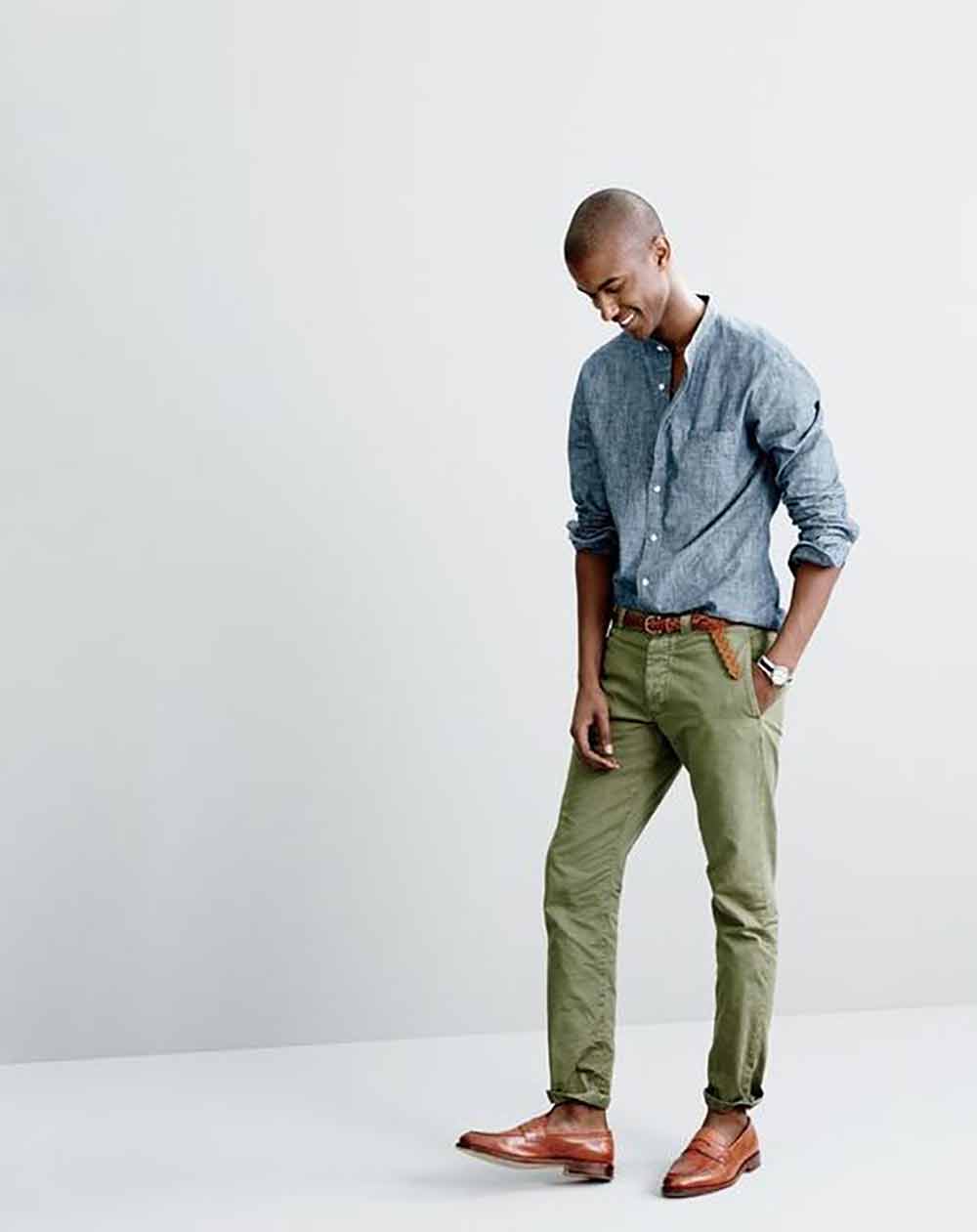



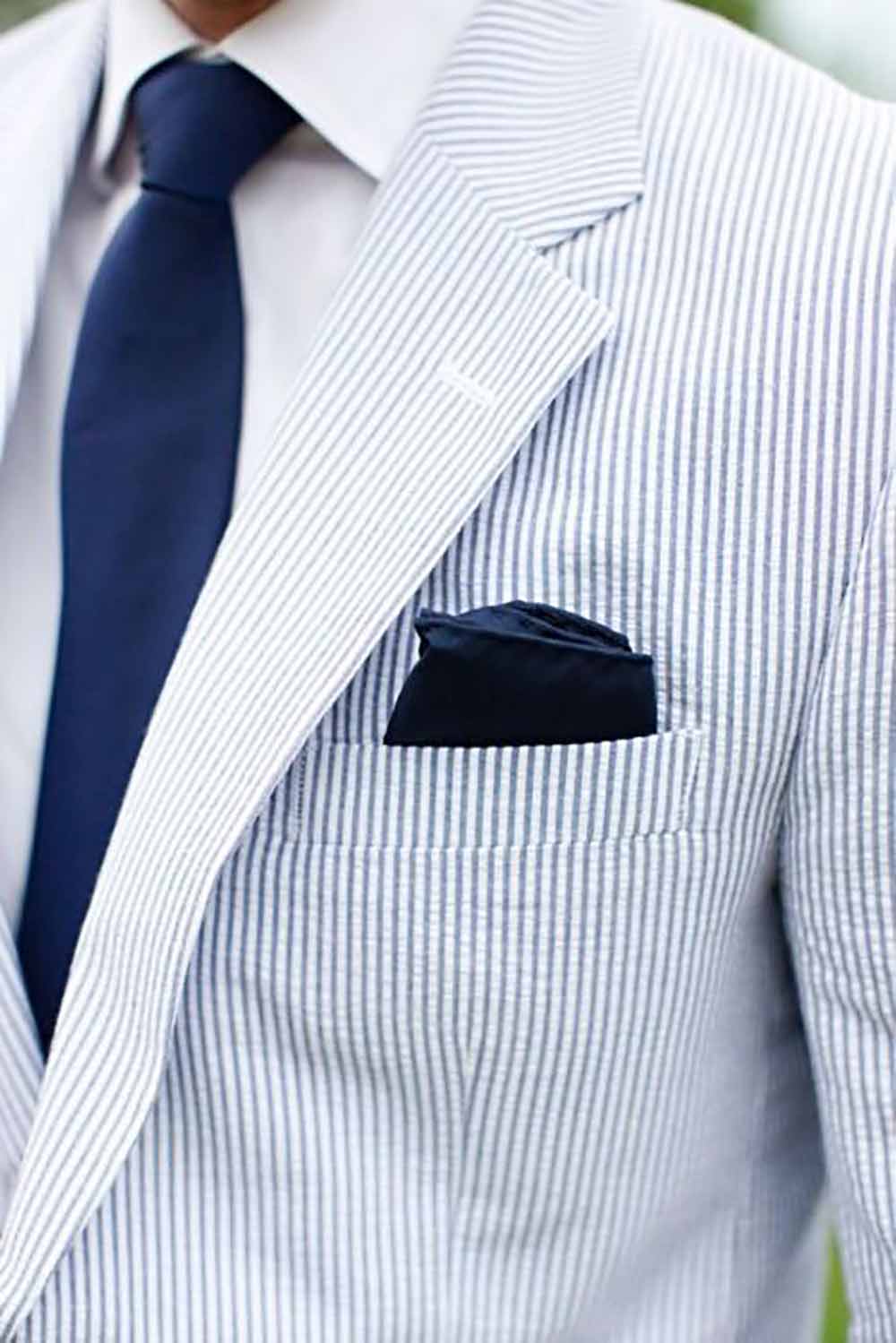

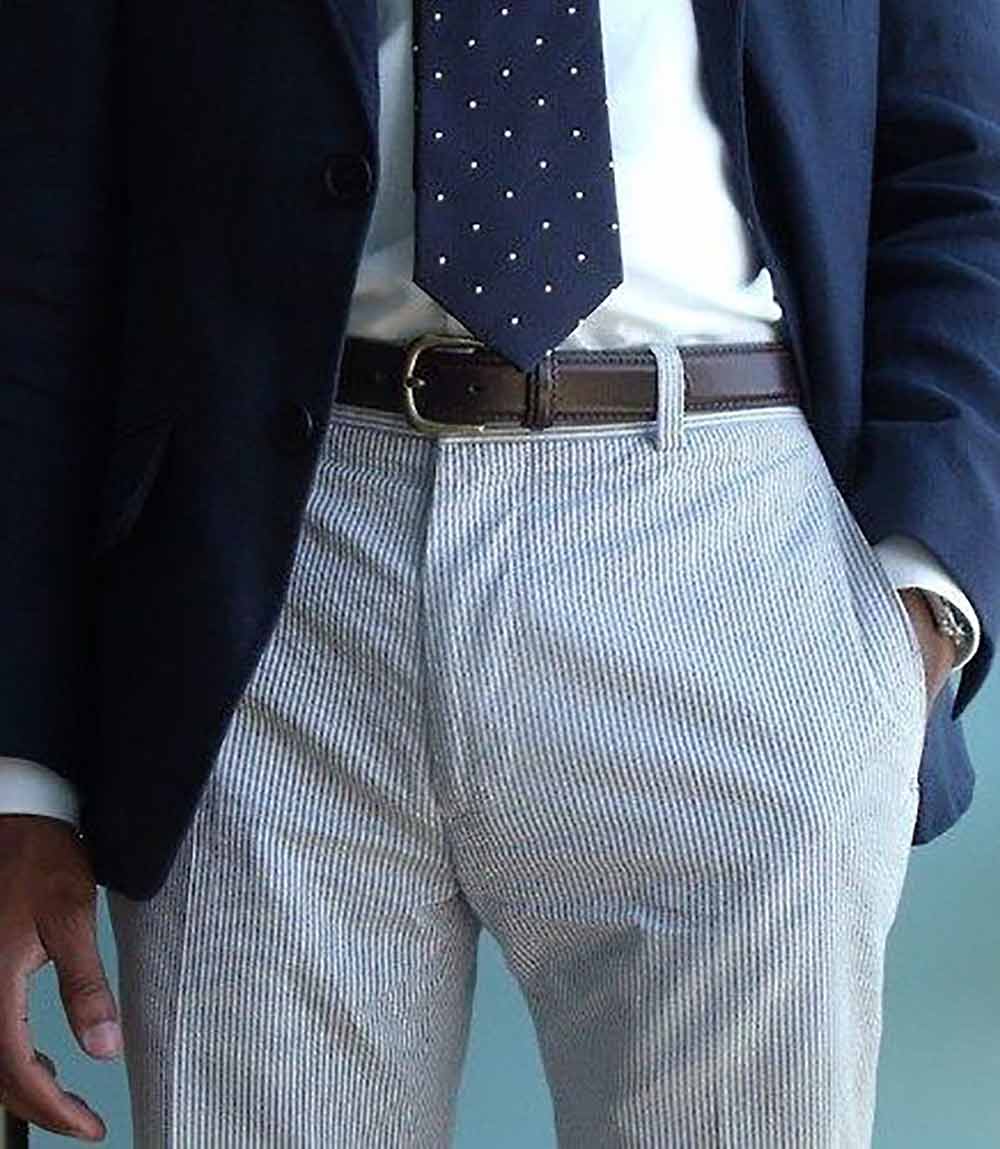

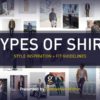



Drop a Line!